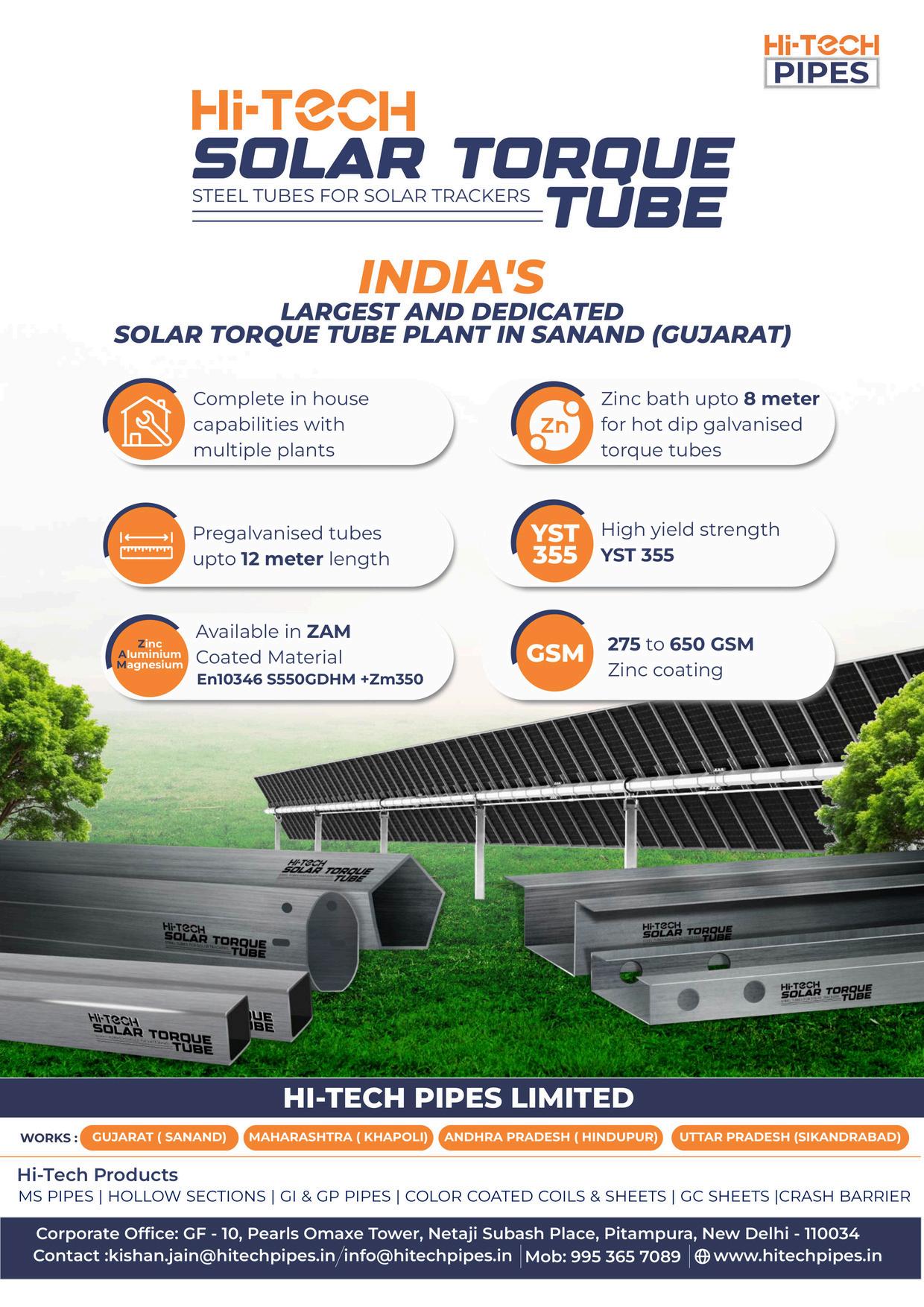








































ADB Approves $240 5 Million For Rooftop Solar Systems To Boost India’s Renewable Energy Goals
REC Limited Secures JPY 31.96 Billion Green Loan For Sustainable Projects In India In Collaboration With Deutsche Bank AG, GIFT City
Brookfield Acquires Majority Stake In Leap Green Energy: Strategic Investment To Propel Tamil Nadu’s Renewable Energy Sector Towards 3 GW Expansion
ADB And ENGIE SA Partner For ₹14 6 billion Loan Agreement To Construct 400 MW Solar Power Plant In Gujarat, India
Jammu & Kashmir Greenlights ₹400 Crore Large-Scale Rooftop Solar Initiative For Government Buildings
Gensol Engineering Wins ₹463 Crores EPC Contract For Gujarat Solar Plant
BluPine Energy Secures $28.6 Million Financing For 75 MWp Solar Project In Chhattisgarh
ADB Approves $240 5 Million For Rooftop Solar Systems To Boost India’s Renewable Energy Goals
Tata Power Solar And Bank of India Partner To Facilitate Green Financing
Rays Power Infra Secures ₹833 Crores In New Solar Projects For Q2 2024
RMC Switchgears Limited Pioneers Into Solar EPC Sector With Landmark ₹4 76 Crore Order For 1 35 Mwp Solar Power Plant In Rajasthan
World Bank Approves $1.5 Billion To Accelerate India’s LowCarbon Energy Transition
DhaSh PV Technologies’ ₹346 35 Crore Mega Project In Tumkur To Produce 50GW Of Solar PV Junction Boxes Annually
Odisha SWC Approves ₹903 41 Crore For Over 102 MW Of Green Energy Projects
Ampin Announces ₹13 Billion Investment In 246 MW WindSolar Hybrid Project
Cleantech Solar Secures ₹855 Crore Loan From Aseem Infrastructure for Renewable Energy Expansion In India
SECI Invites Bids For 2,000 MW Solar Power Projects With 1,000 MW Energy Storage Systems
APGCL Invites Bids For Project Management Consultancy Services For 50 MW Lower Kopili Solar PV Project
CESC Limited Invites Bids For 150 MW Solar PV Power Projects In India
SECI Invites Bids For 12 MW Solar Power Project In Ladakh
NTPC Vidyut Vyapar Nigam Ltd Issues Tender For 1,698 KW Solar Power Project At Munitions India
SECI Launches Major RFS To Boost Green Hydrogen Production In India Under SIGHT Scheme
EESL Invites Bids For Supply Of 2,000 MW Single Phase Solar Inverters Across India
SJVN Launches Tender For 1,200 MW Wind-Solar Hybrid Projects
NTPC Renewable Energy Limited Invites Bids For 795 MW Solar PV Projects At Khavda RE Power Park
SECI Invites Bids For 7 5 MW Solar PV Power Plant In Rajasthan
SJVN Launches Tender For 1200 MW Wind-Solar Hybrid Projects: Bidders Invited For Tariff-Based Competitive Bidding
CMPDI Releases Tender For 70 MW Solar Power Plant At Nandan Washery, Maharashtra
UPNEDA Announces Three Tenders Totaling 7 MW For OnGrid Rooftop Solar Systems With Battery Backup For Government Buildings
SECI Invites Bids For 400 MW Wind-Solar Hybrid Projects To Boost Renewable Energy Capacity In India
NTPC Vidyut Vyapar Nigam Limited Invites Bids For 100 MW ISTS-Connected Wind-Solar Hybrid Projects
REIL Invites Bids For 10 MWp Solar PV Projects On Government Buildings In Rajasthan
North Western Railway’s Jaipur Division Seeks Bids For 2748 kWp Rooftop Solar Power Plant Installation

Sunsource Energy Completes 45 Mwp Solar Power Expansion In Uttar Pradesh, Enhancing Clean Energy Footprint
Juniper Green Energy Expands Renewable Presence With Two PPAs In Gujarat And Rajasthan With 150 MW
Madhya Pradesh to Host World's Largest Floating Solar Plant; Telangana's Solar Capacity Boosted
JSW Neo Secures Additional 400 MW Wind-Solar Hybrid Power Project from MSEDCL
Larsen & Toubro Secures Contract to Build 185 MW Solar PV Plant with Energy Storage in Bihar
KPI Green Energy’s Subsidiary Secures Strategic LoIs for 7 MW Solar Projects
Avaada Group Inaugurates 70 MW Solar Power Project, Boosting Clean Energy in Uttar Pradesh
Epic Energy and Niva Ecotech Partner to Build 35 MWp Solar Park in Solapur, Advancing India’s Renewable Energy Goals
Adani Green Energy and TotalEnergies Forge Joint Venture for 1,150 MW Solar Projects in Gujarat
JSW Neo Energy And Reliance Power Win 1,000 MW SECI Battery Storage Project With Record-Low Tariffs Auction
Tata Power Renewable Energy Secures 200-MW Hybrid Renewable Energy Project in Maharashtra
Sustainiam and Brookfield Onboard 400 MW Renewable Assets in India for I-REC Trading
BluPine Energy Commissions 120 MW Solar Project in Gujarat
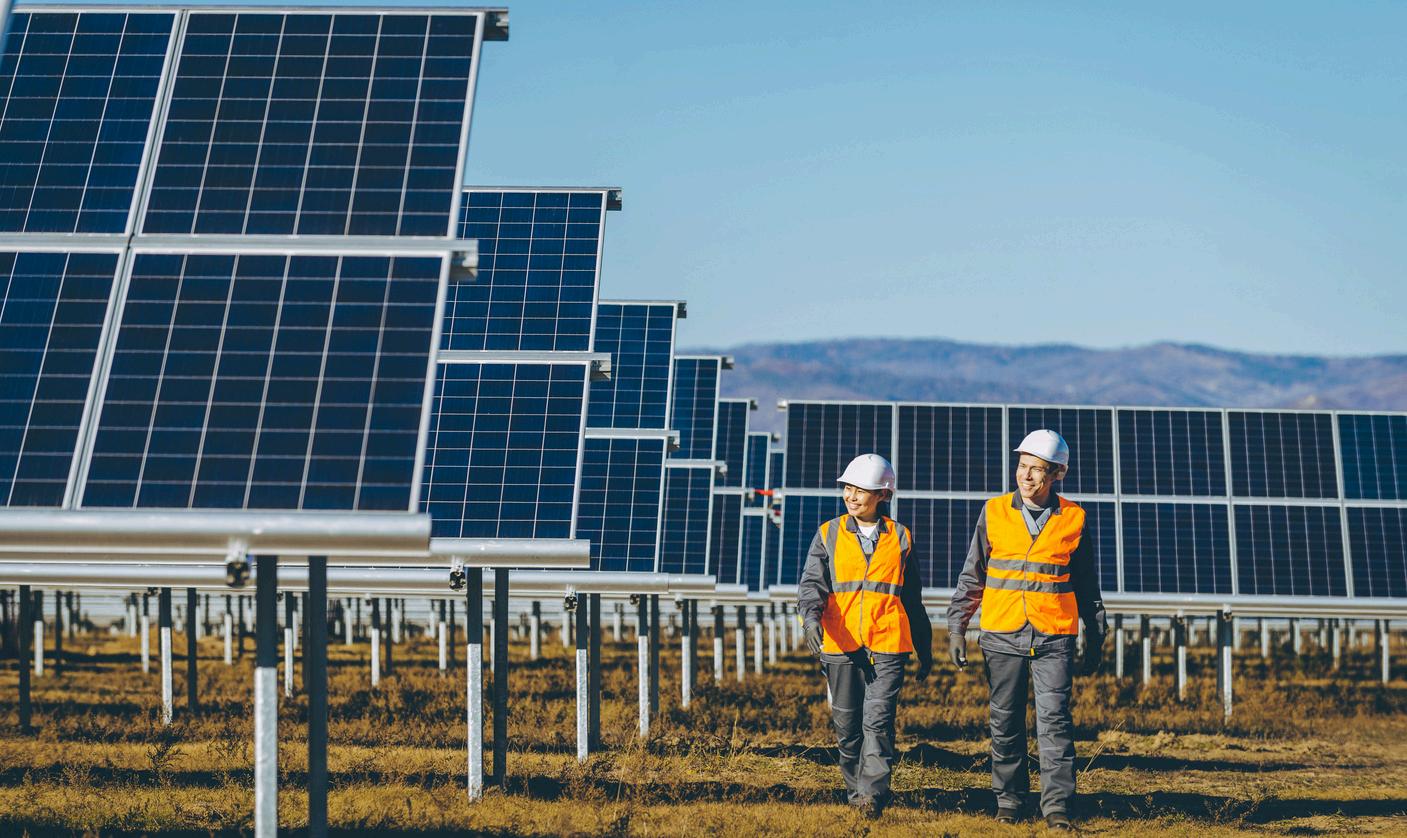
ReNew Launches Major 400 MW Solar Project In Rajasthan
ReNew Signs 437.6 MW Green Energy Agreement with Microsoft
Tata Power Renewable Energy Secures Major 400 MW WindSolar Hybrid Project in Maharashtra
Adani Green Energy and TotalEnergies Forge Joint Venture for 1,150 MW Solar Projects in Gujarat
ADB and ENGIE SA Partner To Construct 400 MW Solar Power Plant In Gujarat, India
Juniper Green Energy Secures Major PPAs With GUVNL And NTPC For 480 MW Wind-Solar Hybrid Projects
JSW Neo Energy Secures 600 MW Wind-Solar Hybrid Power Project in Maharashtra
Godrej Electricals & Electronics Commissions 12 5 MWp Rooftop Solar Project In Madhya Pradesh
JSW Neo Energy Secures 200 MW Wind-Solar Hybrid Project from MSEDCL
Oriana Power to Build ₹520 Crore, 128 MW Solar Plant for Dalmia Cement in India
Apraava Energy Secures 300 MW Solar Project in Rajasthan with NTPC PPA
Saatvik Solar Delivers 70 2MW of Solar Modules for SJVN’s Punjab Project, Pushing India’s Renewable Energy Goals Forward
Waaree Renewable Technologies Secures EPC Contract For ACCIONA Energy’s 412 5 MW Solar Project In Rajasthan
Waaree Energies Secures 900 MW Solar Module Supply Contract With Serentica Renewables For Major Solar Power Project In Rajasthan
Viraj Profiles Pvt Ltd And Avaada Commission 130 MW Solar Power Plant In Maharashtra
Navitas And Hysolwin To Develop 35 MW Solar Park In Solapur, Maharashtra
JSW Energy Signs PPA For 1,325 MW Of Renewable Energy Projects

The solar industry has witnessed remarkable advancements over the past decade, driven by the urgent need for sustainable energy solutions and the ever-increasing demand for electricity As the world transitions towards cleaner energy sources, innovation in solar technology plays a crucial role in meeting energy demands efficiently and cost-effectively Breakthrough solar technologies are revolutionizing the industry, making solar power more accessible, affordable, and efficient than ever before.
One of the most significant innovations in the solar industry is the development of high-efficiency solar cells Traditional silicon-based solar cells have been the backbone of the industry for years However, recent advancements have led to the creation of new materials and cell designs that significantly boost efficiency Perovskite solar cells, for instance, have emerged as a promising alternative to silicon cells. These cells offer high efficiency at a lower cost and can be manufactured using simpler processes. Researchers are continually improving the stability and durability of perovskite cells, aiming to make them commercially viable on a large scale
Another groundbreaking technology is the development of bifacial solar panels. Unlike traditional solar panels that capture sunlight on one side, bifacial panels can capture sunlight on both sides, increasing energy yield. These panels are designed to absorb sunlight from the front and reflect sunlight from the ground or surrounding surfaces This innovation allows for more efficient use of available space and can significantly enhance the overall energy output of solar installations Bifacial panels are particularly effective in areas with high albedo, such as snowy regions or reflective surfaces like white rooftops.
Floating solar farms, also known as floatovoltaics, represent another innovative approach to solar power generation These systems consist of solar panels mounted on floating platforms on bodies of water, such as reservoirs, lakes, and even oceans Floating solar farms offer several advantages, including reduced land use, improved energy efficiency due to the cooling effect of water, and minimized water evaporation from reservoirs. This technology is especially valuable in regions with limited land availability and high water resources, providing a sustainable solution to meet energy needs without compromising valuable land space
The integration of solar energy with energy storage systems is also transforming the industry Advanced battery technologies, such as lithium-ion and solid-state batteries, are enabling the efficient storage of solar energy for use during periods of low sunlight or high demand. Combining solar power with energy storage enhances grid stability, reduces reliance on fossil fuels, and provides a reliable energy supply Innovations in battery technology are continually improving storage capacity, efficiency, and lifespan, making solar-plus-storage systems more viable and cost-effective for both residential and commercial applications
The concept of building-integrated photovoltaics (BIPV) is gaining traction as well. BIPV involves integrating solar panels directly into building materials, such as rooftops, facades, and windows This approach not only generates clean energy but also enhances the
aesthetic appeal of buildings. BIPV systems can be seamlessly incorporated into new constructions and retrofitted into existing structures, offering a versatile solution for urban environments As technology advances, the efficiency and affordability of BIPV systems continue to improve, making them a practical choice for sustainable building design
Another exciting innovation is the development of transparent solar panels. These panels can be integrated into windows, allowing buildings to generate electricity while maintaining natural light and visibility Transparent solar panels utilize advanced materials that selectively absorb ultraviolet and infrared light while allowing visible light to pass through This technology has the potential to transform windows, skylights, and even smartphone screens into energy-generating surfaces, significantly expanding the possibilities for solar power integration in everyday life.
In addition to these technological advancements, the use of artificial intelligence (AI) and machine learning in solar energy systems is revolutionizing how solar power is managed and optimized AI algorithms can analyze weather patterns, energy consumption data, and grid conditions to optimize the performance of solar installations. Predictive maintenance powered by AI can identify potential issues before they become critical, reducing downtime and maintenance costs. Moreover, AIdriven energy management systems can dynamically adjust energy distribution, ensuring maximum efficiency and cost savings for consumers
The solar industry is also benefiting from advancements in manufacturing processes and materials science. Innovations such as roll-to-roll printing, 3D printing, and nanotechnology are streamlining the production of solar panels, reducing costs, and increasing scalability These manufacturing techniques enable the creation of lightweight, flexible, and durable solar panels that can be deployed in various applications, from portable solar chargers to large-scale solar farms
As solar technology continues to evolve, the focus on sustainability and environmental impact remains paramount. Researchers are exploring eco-friendly materials and recycling methods to reduce the carbon footprint of solar panel production and disposal The development of solar panels with longer lifespans and higher recyclability contributes to the overall sustainability of the solar industry
The solar industry is experiencing a wave of innovation that is transforming the way we generate and utilize solar power. Breakthrough technologies such as high-efficiency solar cells, bifacial panels, floating solar farms, energy storage systems, BIPV, transparent solar panels, AI integration, and advanced manufacturing processes are revolutionizing the industry These innovations are making solar power more efficient, affordable, and versatile, paving the way for a sustainable energy future. As technology continues to advance, the solar industry will play a crucial role in meeting the world's growing energy demands while reducing environmental impact and promoting a cleaner, greener planet

Sungrow, the global leading inverter and energy storage system supplier,has its latest residential single phase PVinverter SG5.0RS-L in place which delivers blazing-powerful performance in an ultra-light weight design Simultaneously, its redesigned lightweight cover increases corrosion resistance and lightens the installation It also has innovative safety features that give you insight into everything you care about.
Firstly, Sungrow takes responsibility for its products' environmental footprint throughout their life cycle The new residential hybrid inverter SG5 0RS-L is built with the planet in mind, with a durable 100percent recycled high polymer resin material. The integrated design and comprehensive optimization of materials and structures bring higher power density This engineering-grade material has been successfully used for aerospace and military purposes
Secondly, the SG5.0RS-L has lots of energy in its compact design. In a compact design, the single string input current can reach 16A, which is compatible with high-power modules It is also equipped with PowerMax global MPPT scanning and PID Zero functions These functions can always keep the maximum performance of PV modules, but also keep the whole system in the best power generation status during shadow.
Thirdly, when it comes to household products, the most significant thing is safety With corrosion-resistant, water and dust resistant, lightning protection, and built-in Type II DC&AC SPD, SG5 0RS-L can withstand

harsh environments such as rain, sandstorm, thunder and coastal areas In addition to these outdoor features, SG5 0RS-L has Class B homeappliance-grade radiation protection indoors and extremely low noise, reaching sleep level noise
In addition, the SG5 0RS-L is easy to install and operate It can be lifted with one hand, easily installed by one person, and the snap-fit design makes installation simpler. For O&M, it has a smart IV curve scan and diagnosis, which accurately locates faulty strings By using iSolarCloud, O&M personnel can help users with real-time updates and partial troubleshooting at a distance, thus improving overall O&M efficiency and experience



grow ' s SG5.0RS-L inverter mplifies the next generation of dential solar power solutions ombining blazing-powerful formance with an ultratweight design. This innovative duct is engineered to maximize ciency and streamline allation, ensuring that meowners can harness solar rgy with ease and reliability.
In the rapidly growing solar industry, ensuring technical compliance is essential to maintaining high standards of safety, performance, and reliability As solar energy becomes a more significant part of the global energy mix, adhering to technical standards and regulatory requirements is crucial for the successful deployment and operation of solar power systems This article explores the key aspects of technical compliance in the solar industry, highlighting the importance of standards, certification, and best practices in ensuring excellence.
Technical compliance in the solar industry involves meeting established standards and regulations that govern the design, installation, and operation of solar power systems These standards are developed by national and international organizations, such as the International Electrotechnical Commission (IEC), Underwriters Laboratories (UL), and the Bureau of Indian Standards (BIS). They cover various aspects of solar technology, including module efficiency, electrical safety, mechanical durability, and environmental performance
One of the primary components of technical compliance is the certification of solar products and systems Certification ensures that solar modules, inverters, and other components meet the required standards and perform reliably under specified conditions. For instance, IEC 61215 and IEC 61730 are widely recognized standards for the performance and safety of crystalline silicon solar modules. Compliance with these standards is verified through rigorous testing by accredited laboratories, which simulate realworld conditions to assess the durability and efficiency of solar products
In addition to product certification, compliance with installation standards is crucial for ensuring the safe and efficient operation of solar power systems Proper installation practices are vital to prevent electrical hazards, structural failures, and performance issues Standards such as IEC 62548 provide guidelines for the design and installation of photovoltaic (PV) arrays, covering aspects like system layout, grounding, and electrical connections Following these guidelines helps installers avoid common pitfalls and ensures that solar systems are set up correctly to maximize their lifespan and energy output
Another important aspect of technical compliance is the regular inspection and maintenance of solar power systems Periodic inspections help identify and rectify issues that could compromise the safety and performance of the system. For example, electrical components should be checked for signs of wear and corrosion, and mounting structures should be inspected for stability and integrity Routine maintenance, such as cleaning the modules and checking for shading, is essential to keep the system operating at peak efficiency Compliance with maintenance standards and best practices helps prolong the life of solar systems and ensures they continue to deliver reliable energy
Technical compliance also extends to the operational phase of solar power systems Monitoring and data analysis play a critical role in ensuring that systems perform as expected and meet regulatory requirements. Advanced monitoring systems can track the performance of individual modules and inverters, providing real-time data on energy production, system efficiency, and potential faults By analyzing this data, operators can detect anomalies early and take corrective actions to maintain optimal performance. Compliance with operational standards and protocols ensures that solar power systems deliver consistent and reliable energy over their lifetime
In the context of grid-connected solar power systems, compliance with grid codes and interconnection standards is essential These standards ensure that solar systems integrate seamlessly with the utility grid, maintaining grid stability and reliability. For example, grid codes specify requirements for voltage control, frequency regulation, and fault ride-through capabilities Compliance with these standards is verified through grid connection studies and testing, ensuring that solar systems can operate harmoniously with the grid and contribute to its stability
Ensuring technical compliance in the solar industry also involves staying updated with evolving standards and regulations. As solar technology advances and new challenges emerge, standards are continuously reviewed and updated to reflect the latest best practices and technical innovations. Industry stakeholders, including manufacturers, installers, and operators, must stay informed about these changes and adapt their practices accordingly Participating in industry forums, training programs, and certification schemes helps professionals stay current with the latest developments in technical compliance
Moreover, the role of regulatory bodies and industry associations is crucial in promoting and enforcing technical compliance. These organizations develop and update standards, provide certification and accreditation services, and conduct inspections and audits to ensure compliance For example, the Ministry of New and Renewable Energy (MNRE) in India plays a key role in formulating policies and standards for the solar industry, while organizations like the Solar Energy Corporation of India (SECI) and the National Institute of Solar Energy (NISE) provide technical support and guidance.
In conclusion, navigating technical compliance in the solar industry is essential for ensuring the safety, reliability, and performance of solar power systems Adhering to established standards and best practices, obtaining product certification, following proper installation and maintenance procedures, and staying updated with evolving regulations are all critical components of achieving excellence in the solar industry By prioritizing technical compliance, the solar industry can continue to grow sustainably, contributing to a cleaner and more reliable energy future.

In the context of rapid global advancements in photovoltaic technology, LONGi Green Energy Technology Co., Ltd. (hereinafter referred to as “LONGi”) has become a star in SNEC PV+ 2024 and Intersolar Europe 2024 held in June, due to its innovative BC (Back Contact) cell technology and a series of high-performance products
BC Product Family appearing, covering allscenario applications
In September 2023, LONGi officially announced its decision to adopt the BC cell technology route In the following months, the company made significant strides in various new technology fields, launching a series of major products such as HPBC 2.0, and Hi-MO X6 Max. These launches demonstrated LONGi’s profound expertise in silicon wafer and cell technology and its firm commitment to the BC technology path, quickly capturing widespread market attention
Amid the accelerating evolution of photovoltaic cell technology, several technological routes such as HJT, TOPCon, and BC have emerged in the market However, the decision of LONGi to prioritize BC technology for its future development is not a coincidence On June 17, at the 2023 Annual General Meeting, Li Zhenguo, Founder and President of LONGi stated, “Currently, cell segment is only the one in the photovoltaic industry who has significant potential for major advancements The theoretical efficiency of crystalline silicon solar cells is 29%, and the efficiency of LONGi’s second-generation HPBC cells has already surpassed 26 5%, reaching 91% of the theoretical efficiency ”
LONGi has developed a series of products based on BC technology These products are suitable for a wide range of applications in allscenarios of distributed PV as well as large-scale projects This capability for all-scenario applications enhances the broader applicability and competitiveness of BC technology in the photovoltaic market.
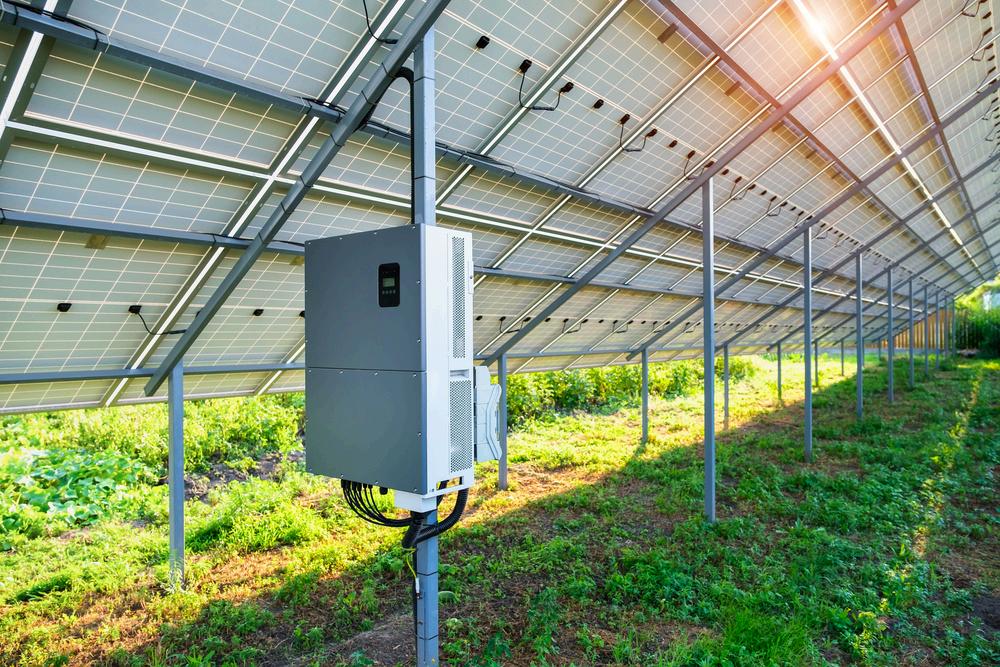
Technology enhances quality upgrade and ensures multi-level reliability
LONGi has obtained a total of 2,879 authorized patents as a result of its unwavering commitment to innovation LONGi has committed more than RMB 23 5 billion in R&D over the last five years By 2023, it will have invested RMB 7 721 billion, or 5 96% of its yearly turnover, in R&D
LONGi’s strategic focus on BC technology isn't just a choice; it’s a bold statement that prioritizes quality, reliability, and adaptability across all photovoltaic applications.
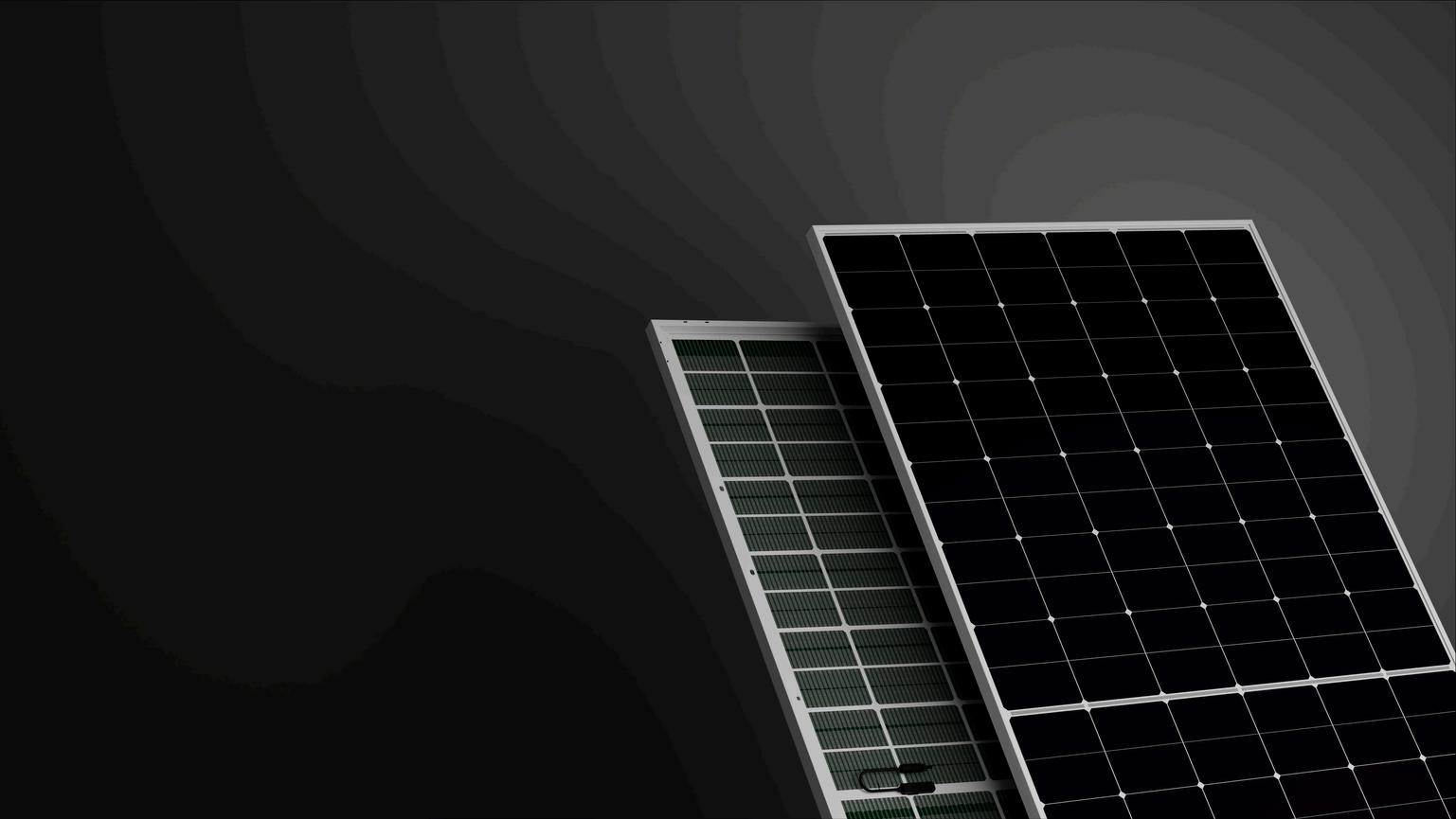
LONGi has devoted a lot of resources to the R&D of technology, in developing and testing BC technology LONGi has applied for 120 invention patents, and these technical achievements have provided strong support for LONGi to maintain its leading position in the field of BC technology.
The solar energy industry has made remarkable strides over the past few decades, with advances in solar panel technology, energy storage systems, and installation methods One critical aspect of solar energy systems that often goes unnoticed is the Balance of System (BoS). BoS encompasses all the components of a solar power system excluding the solar panels themselves. This includes inverters, wiring, mounting structures, switches, and monitoring equipment The BoS plays a crucial role in maximizing solar energy efficiency and performance, ensuring that the entire system operates smoothly and effectively.
The primary function of BoS components is to support the solar panels in converting sunlight into usable electricity and delivering it to the grid or end-users Inverters, for example, are essential for converting the direct current (DC) produced by solar panels into alternating current (AC) that can be used by homes and businesses or fed into the electrical grid. The efficiency of inverters directly impacts the overall performance of the solar power system Modern inverters come with features such as maximum power point tracking (MPPT), which optimizes the power output from the solar panels by continuously adjusting the electrical load.
Mounting structures are another critical component of the BoS They provide the necessary support and orientation for solar panels, ensuring they are securely attached and positioned to capture the maximum amount of sunlight Properly designed and installed mounting structures can significantly enhance the efficiency of a solar power system. Fixed-tilt mounts are commonly used for residential installations, while tracking systems, which adjust the angle of the panels throughout the day to follow the sun, are used in larger, utility-scale solar farms Tracking systems can increase energy production by up to 25-30% compared to fixed-tilt mounts, highlighting their importance in maximizing efficiency
Wiring and electrical components are also vital to the BoS Highquality wiring ensures that the electricity generated by the solar panels is efficiently transmitted to the inverters and eventually to the grid or storage systems Poor-quality wiring can lead to significant energy losses and even pose safety risks Properly sized and installed wiring minimizes resistance and maximizes the flow of electricity, contributing to the overall efficiency of the solar power system
Safety devices such as switches, fuses, and circuit breakers are integral to the BoS These components protect the system from electrical faults, surges, and other potential hazards They ensure that the system operates safely and reliably, preventing damage to the solar panels, inverters, and other equipment Regular
maintenance and inspection of these safety devices are essential to ensure their proper functioning and to maintain the overall performance of the solar power system
Monitoring equipment is another crucial aspect of the BoS. Advanced monitoring systems allow for real-time tracking of the solar power system’s performance, providing valuable data on energy production, consumption, and potential issues This data can be accessed remotely through software platforms, enabling system owners and operators to make informed decisions about maintenance and optimization By identifying and addressing issues promptly, monitoring systems help ensure that the solar power system operates at peak efficiency and delivers maximum energy output
The importance of the BoS in maximizing solar energy efficiency and performance cannot be overstated. While the solar panels themselves are the most visible part of a solar power system, the BoS components are equally crucial in ensuring that the system operates effectively Investing in high-quality BoS components and ensuring their proper installation and maintenance can significantly enhance the overall efficiency and reliability of a solar power system
Moreover, advancements in BoS technology are continuously contributing to the improvement of solar energy systems For instance, the development of smart inverters with advanced features such as grid support and energy management capabilities is helping to integrate solar power more effectively into the electrical grid Similarly, innovations in mounting structures, such as lightweight and flexible materials, are making it easier to install solar panels on a wider variety of surfaces and locations
The Balance of System (BoS) is a critical component of any solar power system, encompassing all the elements that support the solar panels in converting sunlight into usable electricity From inverters and mounting structures to wiring, safety devices, and monitoring equipment, each component plays a vital role in maximizing the efficiency and performance of the system. By investing in high-quality BoS components and ensuring their proper installation and maintenance, solar power system owners can achieve optimal energy production and contribute to a more sustainable and reliable energy future. As the solar industry continues to evolve, advancements in BoS technology will remain a key driver in enhancing the efficiency and performance of solar energy systems, paving the way for greater adoption and integration of solar power worldwide

The Asia-Pacific (APAC) region is a rising star of economic growth worldwide, and as the economy is reaching for the top, the demand for electricity is also surging, driving up prices and putting a strain on the grid Furthermore, climate change puts more stress on the existing matter with more restrictions on cheap yet heavily polluted power sources like coal and gas. Extreme weather like draught makes hydro power, which was usually abundant & affordable, now become hard to harvest
This scenario has prompted governments across the APAC region to seek cleaner alternatives, which further pressures the stability and affordability of traditional power grids But many obstacles stand on their way to achieve the goal, especially with a limited budget & high pressure from a fast-growing economy & energy needs
Therefore, homeowners have to seek ways to gain energy independence and stabilize their electricity costs, and installing solar appears to be the best option thanks to many benefits it brings:
Energy Independence: By installing solar panels, homeowners can generate their own electricity, reducing reliance on the grid. This not only ensures a more stable power supply but also protects against fluctuating energy prices
Environmental Benefits: Solar energy is a clean, renewable resource that reduces greenhouse gas emissions. Transitioning to solar helps mitigate climate change and reduces the carbon footprint of households
Long-term Savings: Despite the initial investment, solar power systems can lead to significant savings on electricity bills over time Government incentives and falling costs of solar technology make it an increasingly attractive option

Easy installation & usage: a solar system for households can usually be done in less than 3 days Additionally, most solar systems come with an user-friendly application that can be used on a smart phone which helps the owner manage the performance of the system and manage it better from a far
Among many brands, GoodWe stands at the forefront of providing advanced and reliable solar solutions tailored for residential use Offering a comprehensive product range from 0 7 – 30kW for on-grid inverter and 3 – 30kW for hybrid inverter or energy storage inverter, GoodWe ensures that homeowners can find solutions that meet their unique energy needs. The inverters are known for advanced safety, high efficiency, reliability, and smart management features
By embracing solar power, homeowners in the APAC region can achieve energy independence, enjoy financial savings, and contribute to environmental sustainability GoodWe’s innovative residential solar solutions empower households to harness the power of the sun, leading to a cleaner, more sustainable future Embrace the future of energy with GoodWe and take the first step towards a brighter, greener tomorrow
More products information: https://en goodwe com/products

GoodWe’s innovative solar solutions cater perfectly to the rising demand for clean, reliable energy in the APAC region, offering advanced technology and unmatched reliability.”
Solar photovoltaic (PV) technology has rapidly evolved over the years, playing a pivotal role in shaping India's energy landscape. As the country strives to meet its ambitious renewable energy targets, advancements in solar PV modules are proving to be a game-changer Emerging technologies in this sector are enhancing efficiency, reducing costs, and making solar energy more accessible and reliable This article explores the latest developments in solar PV modules and their impact on India's energy future
One of the most significant advancements in solar PV technology is the development of high-efficiency modules Traditional siliconbased solar cells have seen substantial improvements in their efficiency, thanks to innovations such as Passivated Emitter and Rear Cell (PERC) technology PERC cells are designed to capture more sunlight and convert it into electricity more efficiently than conventional cells This technology has pushed the efficiency of silicon solar cells beyond 22%, making them a preferred choice for large-scale solar projects in India
In addition to PERC, bifacial solar modules are gaining traction. Unlike traditional modules that capture sunlight only from one side, bifacial modules can generate power from both the front and rear surfaces This capability allows them to harness reflected sunlight from the ground and surrounding surfaces, increasing overall energy yield Bifacial modules are particularly beneficial in regions with high albedo surfaces, such as deserts and snowcovered areas Their adoption in India is expected to boost solar power generation, especially in the arid regions of Rajasthan and Gujarat
Perovskite solar cells represent another breakthrough in PV technology. These cells are made from a new class of materials known as perovskites, which have shown remarkable efficiency improvements in laboratory settings Perovskite solar cells are lightweight, flexible, and can be manufactured using low-cost materials and processes. While they are still in the research and development phase, their potential to achieve efficiencies comparable to silicon cells at a fraction of the cost makes them a promising candidate for future solar installations in India.
Another noteworthy advancement is the integration of solar PV modules with energy storage systems As solar energy is intermittent by nature, combining PV modules with batteries ensures a stable and reliable power supply Lithium-ion batteries are currently the most popular choice for energy storage due to their high energy density and declining costs However, emerging technologies like solid-state batteries and flow batteries offer even greater potential for long-term energy storage
These advancements enable solar power plants to store excess energy during peak production hours and release it during periods of low sunlight or high demand, thereby enhancing grid stability and reliability
The adoption of smart PV modules is also revolutionizing the solar industry These modules are equipped with embedded electronics that allow for real-time monitoring and optimization of individual panel performance By using advanced algorithms and data analytics, smart PV modules can identify and mitigate issues such as shading, soiling, and module mismatch, maximizing overall system efficiency In India, where diverse climatic conditions can impact solar performance, smart PV technology ensures optimal energy generation and reduces maintenance costs.
Flexible and HJT solar modules are another area of innovation Unlike traditional rigid panels, these modules are lightweight and can be easily integrated into various surfaces, including building facades, rooftops, and even vehicles Their versatility makes them ideal for urban environments and applications where conventional panels are impractical.
India's focus on indigenization and local manufacturing is also driving advancements in solar PV technology Government initiatives such as the Production Linked Incentive (PLI) scheme aim to boost domestic production of high-efficiency solar modules and components By encouraging local innovation and reducing dependency on imports, these policies are fostering a robust and self-reliant solar industry in India.
Moreover, advancements in solar PV recycling and sustainability are gaining importance As the deployment of solar panels increases, so does the need for effective end-of-life management. Innovations in recycling technologies are making it possible to recover valuable materials from old panels and reduce environmental impact. Sustainable manufacturing practices, such as using eco-friendly materials and reducing carbon footprints, are becoming integral to the solar industry's growth
In conclusion, the advancements in solar PV modules are significantly shaping India’s energy future From high-efficiency cells and bifacial modules to perovskite cells and smart technologies, these innovations are enhancing the performance, affordability, and reliability of solar power. As India continues to invest in renewable energy, these emerging technologies will play a crucial role in meeting the country’s energy needs sustainably With ongoing research, supportive policies, and a commitment to green energy, India is well on its way to becoming a global leader in solar power

Renewable energy has become a focal point in India due to advancements in green technology and ambitious government targets for increasing renewable energy adoption India, now a prominent player in the renewable energy industry, ranks 4th globally in terms of installed capacity To achieve 500GW of installation by 2030, the country has actively engaged in the solar energy industry Recently, India has witnessed significant growth in large-scale solar projects, with 56 GW of utility-scale solar capacity commissioned by March 31st, 2023, and another 51 7 GW in various stages of development (according to JMK Research & Analytics)
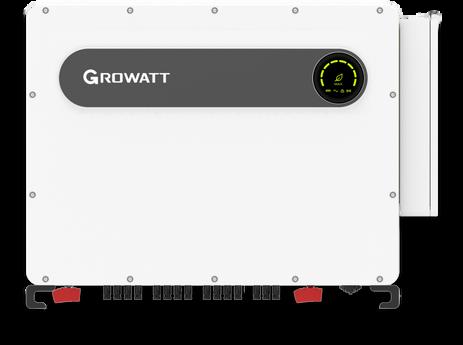
In support of India’s renewable energy goals, Growatt has launched new utility string inverters ranging from 320 to 350kW The development of the ‘MAX 320 350KTL3-X’ by Growatt’s R&D team represents a breakthrough product poised to transform the global solar market This economically feasible solution is particularly advantageous for large-scale solar projects because of its increased individual capacity rating With an impressive maximum efficiency of 99.03%, this product ensures optimal energy conversion. These
inverters facilitate a maximum DC/AC ratio of 1.5, empowering installers to design systems for higher photovoltaic efficiency and energy generation In addition, the series incorporates a robust maximum power point trackers (MPPT) circuit operating over a wide voltage range from 500V to 1500V It even features 6 independent MPPTs and supports connection of up to 5 strings per MPPT, making it adaptive for various PV system settings With an impressive current acceptance of 75A per MPPT, it is highly compatible with higher-wattage PV panels
During unexpected faults, protection system is critical for safeguarding both the product and its operators. Growatt’s MAX 320~350KTL3-X inverter has numerous protective features that enhance system longevity and reliability It includes Type II Surge Protection Devices (SPDs) on both AC and DC sides to shield against transient surges Besides, the inverters offer protection against potential induced degradation (Anti-PID) and has an optional arc fault protection Other advantages like string detection and I/V diagnosis can pinpoint faulty string locations accurately The inverters also feature intelligent string breaking capability They are also designed to endure diverse environmental conditions with IP66 rating, suitable for both outdoor and indoor installations.
Apart from the MAX series, Growatt provides more solar energy options, including residential on-grid inverters ranging from 0.7511 4kW, commercial and industrial inverters ranging from 15-150kW, as well as various energy storage systems. For more information, please refer to the website: en growatt com
Scheduled for October 3-5, 2024, the upcoming ‘the Battery Show India’ will be hosted at the India Expo Centre & Mart, Plot No 23-25 & 27-29, Knowledge Park II, Greater Noida, Delhi NCR Growatt is gearing up to present its all-scenario solar solutions during the event at Booth B340 in Hall 5 Welcome to visit Growatt booth and engage in insightful conversations with the team.

The MAX series reflects Growatt’s dedication to supporting India’s renewable energy goals, providing scalable solutions that cater to the evolving needs of the solar industry.”
The future of solar storage is rapidly evolving, with advancements in battery technology playing a crucial role in enhancing energy independence and optimizing solar energy utilization As the adoption of solar power continues to grow, the need for efficient and reliable energy storage solutions becomes increasingly important Advanced battery technologies are set to transform how solar energy is stored, managed, and utilized, paving the way for a more sustainable and resilient energy future
Solar energy generation is inherently intermittent, with production varying based on time of day, weather conditions, and seasonal changes. To address this challenge, energy storage systems are essential for capturing excess solar power during periods of high production and storing it for use during times of low or no sunlight This capability ensures a consistent and reliable energy supply, enhancing energy independence and reducing reliance on traditional grid power sources
One of the most promising advancements in solar storage is the development of lithium-ion batteries. Lithium-ion technology has become the dominant choice for solar storage due to its high energy density, long cycle life, and relatively low maintenance requirements These batteries are capable of storing large amounts of energy in a compact and lightweight form, making them ideal for residential and commercial solar power systems Additionally, advancements in lithium-ion battery technology, such as improved chemistries and enhanced thermal management, are further increasing their efficiency and longevity.
Another significant development in solar storage is the emergence of solid-state batteries. Unlike traditional lithium-ion batteries that use liquid electrolytes, solid-state batteries utilize solid electrolytes, which offer several advantages Solid-state batteries have the potential to provide higher energy densities, greater safety, and longer lifespans compared to their liquid counterparts. Although still in the early stages of commercialization, solid-state batteries hold promise for future solar storage applications, particularly in large-scale and high-performance energy storage systems
Flow batteries represent another innovative approach to solar storage These batteries use two electrolyte solutions that flow through a cell to generate electricity, allowing for scalable and flexible energy storage. Flow batteries are particularly well-suited for large-scale solar installations due to their ability to provide longduration energy storage and their relatively low degradation over time. While they may have lower energy densities compared to lithium-ion batteries, their advantages in scalability and longevity make them a valuable option for integrating with solar power systems
The integration of advanced battery solutions with solar power systems is also being enhanced by improvements in battery management and control technologies Advanced battery management systems (BMS) play a crucial role in monitoring and optimizing battery performance, ensuring safe and efficient operation These systems provide real-time data on battery health, charge and discharge cycles, and overall performance, enabling more precise management of stored energy and better integration with solar power generation.
In addition to technological advancements, the future of solar storage is also influenced by evolving market dynamics and regulatory frameworks. Governments and policymakers are increasingly recognizing the importance of energy storage in achieving renewable energy targets and enhancing grid reliability. Incentives, subsidies, and supportive regulations are driving the adoption of advanced battery solutions and facilitating the integration of solar storage with renewable energy systems
The future of solar storage is also marked by the development of integrated energy solutions that combine solar power generation, storage, and energy management into cohesive systems These integrated solutions aim to provide users with greater control over their energy usage, allowing for optimized utilization of solar power and stored energy For instance, smart home energy systems that integrate solar panels, batteries, and energy management software can enable homeowners to maximize their energy independence, reduce utility bills, and contribute to a more sustainable energy future
As the solar storage industry continues to advance, ongoing research and development efforts are likely to drive further innovations and improvements Emerging technologies, such as next-generation battery materials, advanced manufacturing techniques, and new energy storage concepts, will play a key role in shaping the future of solar storage By enhancing the efficiency, reliability, and affordability of energy storage solutions, these advancements will support the continued growth of solar power and contribute to a more resilient and sustainable energy system.


FIMER supplied its Bi-directional Converters PVS980-58BC 2MVA for India’s largest Solar+BESS project in Chhatisgarh Total of 24 nos of FIMER PCS was supplied for this unique project
India has marked a significant milestone in renewable energy with the inauguration of its largest Battery Energy Storage System (BESS) integrated with a 100 MW Solar Power Plant Dedicated by the Hon'ble Prime Minister of India, Shri Narendra Modi, this groundbreaking project is spearheaded by the Solar Energy Corporation of India Limited (SECI) and executed by TATA Power Solar Systems Ltd Located in Rajnandgaon, Chhattisgarh, the project underscores India’s commitment to advancing green energy technologies and sustainable power solutions The Project was completed in March 2024
FIMER bidirectional converter, PVS980-58BC, is aimed at largescale grid connected energy storage applications. The converters are available from 1454 kVA up to 5000 kVA
PVS980-58BC bidirectional converter is based on the world’s leading converter platform used also in FIMER solar inverters ensuring high performance, reliability and availability of global service support
FIMER PVS980-58BC bidirectional converters are ideal for multimegawatt energy storage systems, providing maximum grid stability for power plants with intermittent energy sources
The high DC input voltage, high efficiency, proven components, compact and modular design and a host of life cycle services available ensure FIMER PVS980-58BC bidirectional converters provide a rapid return on investment
Total Capacity: 100 MW Solar PV Power Plant coupled with a 40 MW/120 MWh Battery Energy Storage System
Completion Time: The project was completed within 18 months
Number of Modules: 239,685 bifacial mono-crystalline solar modules used
PCS: FIMER Bi-Directional Converters PVS980-58BC-24 nos
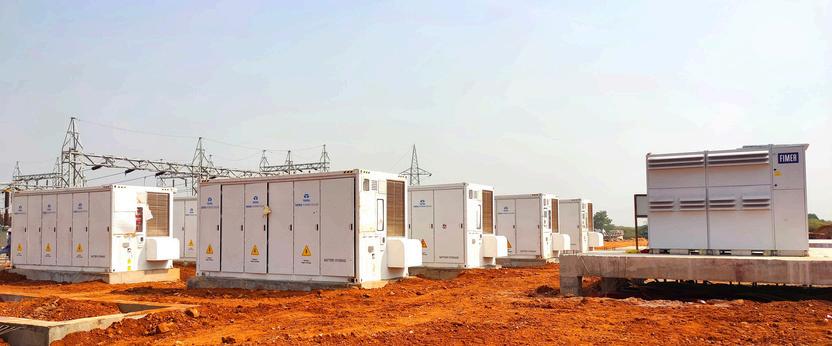
Innovative Storage Solution: The integration of a 120 MWh BESS provides critical backup power for up to 3 hours during non-solar peak periods, ensuring reliability and stability in the energy supply
Environmental Impact: The project is expected to significantly reduce carbon emissions and set a new benchmark in environmental sustainability
Technical Achievement: The deployment of advanced bifacial modules and battery storage technology positions this project as a leader in large-scale renewable energy projects
CO2 Savings: Approximately 175,422.68 tons of CO2 emissions are saved annually

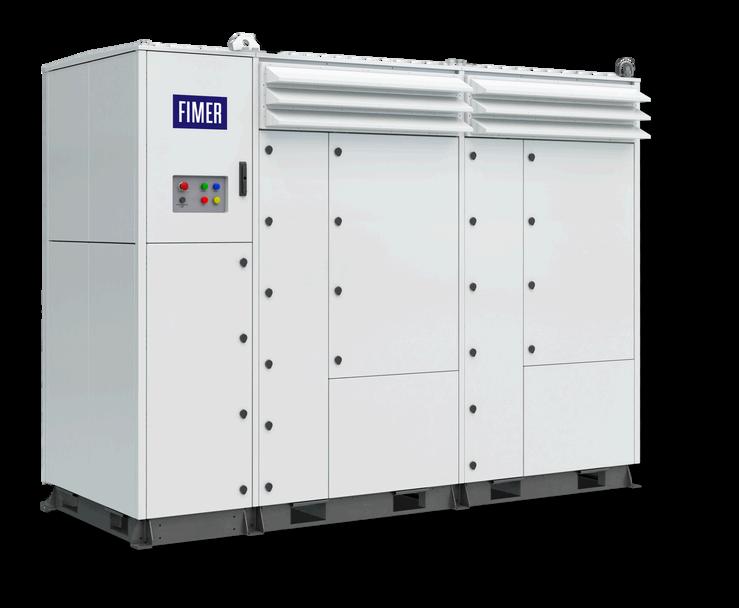
Technology: Utilizes lithium-ion battery technology for energy storage and bifacial mono-crystalline modules to maximize solar energy capture

Terrain Difficulties: The project faced challenges due to the hilly and rocky terrain Overcoming these involved innovative engineering solutions and specialized machinery
Infrastructure Requirements: Significant infrastructure development was required, including extensive transmission lines and integration with existing grid systems, addressing logistical and environmental considerations

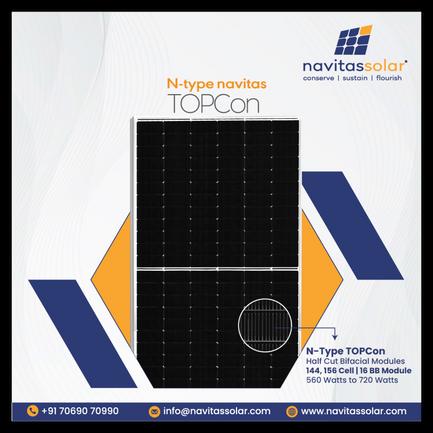


Since 2013, Navitas Solar has been leading the standard for manufacturing and supplying solar panels Annually producing over 500 MW, they are dedicated to providing cutting-edge solar solutions, making solar power more efficient and accessible
Promotions and advancements in renewable energy will shift the dependency of the planet from fossil fuels and solar energy is making a significant contribution towards the same. However harnessing solar energy requires solar panels. And different solar panels have different energy conversion ratings Navitas Solar with years of research have developed a new type of solar panel that is reliable and durable with high efficiency This article discusses in detail what sets these panels apart
The N-Type TOPCon series is the culmination of years of research and expertise combined together with the goal to provide efficient, durable and accessible solar energy These panels incorporate many key innovations
Typically solar panels use P-Type silicon But as the name suggests these Navita’s panels utilize N-Type silicon which offers higher efficiency and better performance, even during low-light conditions It also holds up better over time, ensuring longer-lasting power output.
TOPCon-Tunnel Oxide Passivated Contact- technology influences the productivity of solar cells by cutting down on electron recombination losses This means solar panels catch and turn more electrons into electricity, which ups their overall performance
These panels come with half-cut cells making them smaller than regular solar panels This setup helps to cut down on energy loss and makes the panel better at handling shade
When investing in solar power, efficiency of solar panels is a crucial factor because the electricity output depends on it To accommodate different necessities, Navitas Solar makes N-Type TOPCon panels in two modules that feature impressive advanced cell technology This feature allows N-Type TOPCon panels to have a conversion rate of over 22%, of turning sunlight into electricity This means they make more power and better return on investment. These panels perform well even in low-light conditions, thus keeping the supply of electricity constant The inclusion of bifacial modules is the ability to catch light from both sides, increasing the power output
What are the Key Features of the N-Type TOPCon 144-Cell Module?
The N-Type TOPCon 144-Cell 16 BB Half-Cut Bifacial is an outstanding choice for many because of its:
Durability: With the ability to withstand extreme weather and temperature, this module is suitable for all climates.
Efficiency: Up to 21 2% conversion efficiency, it maximizes energy consumptions to produce most electricity from the available sunlight
Versatility: This module is compact and has high power output, making it suitable for a wide range of applications, from residential rooftops to large commercial installations
The N-Type TOPCon 156-Cell 16 BB Half-Cut Bifacial Module offers even greater benefits for those seeking high-performance solar solutions
Higher Output: With more cells, this module provides greater energy production, making it ideal for large installations that require maximum power output
Advanced Temperature Coefficient: This module has a lower temperature coefficient, meaning high temperatures have a less of an impact on the efficiency of the panel, which is particularly beneficial in hotter climates
Long-Term Reliability: Built with high-quality materials, this module offers long-term reliability which comes with an extended warranty, providing peace of mind for years to come.
Navitas Solar’s N-Type TOPCon series deliver high efficiency, durability, and versatility Featuring N-Type silicon, TOPCon technology, and bifacial modules, these panels offer superior performance for those looking to install a solar power system in their homes or in commercial spaces.
Both the 132-cell and the 156-cell module are reliable, efficient and durable choices that benefit both the wallet and the environment Visit Navitas Solar website or contact us to know more about which N-Type TOPCon module is suitable for you and be a part of a positive movement that contributes to a greener tomorrow and a more sustainable future


Navitas Solar's unwavering commitment to pioneering solar technology is exemplified in their N-Type TOPCon series. These panels incorporate years of dedicated research and development, resulting in products that offer superior efficiency and remarkable durability.

The National Electricity Plan (NEP) approved by the Government of India (GoI) expects the share of renewable (RE) plus large hydro in the all-India electricity generation to increase to 35% by FY2027 and further to 44% by FY2032, compared to 21% in FY2024 The optimal generation mix report by the Central Electricity Authority (CEA) estimates the RE plus large hydro share at 41% by 2030 ICRA estimates the share of RE generation (including large hydro) to increase to close to 40% by FY2030
Given the intermittent nature of wind and solar power generation, achieving such a high level of RE share in the generation mix requires the use of storage capacities. A solar project starts generating power from about 6-7 AM in the morning, which peaks around the afternoon and thereafter dips in the evening On the other hand, the wind power generation peaks during the evening hours and remains relatively high during the night hours compared to the generation during the day hours
This makes it challenging for the grid operators to match the supply with the demand as the share of RE rises in the overall generation mix While one way to handle the intermittency is through adequate storage capacities at a grid level managed by the load dispatch centers / discoms, the other way is to manage the supply at the generator level through a combination of hybrid RE projects complemented with storage systems to provide round-the-clock (RTC) and firm & dispatchable RE (FDRE) supply to the grid. The second approach could however bring in inefficiencies for the grid, considering the RE capacity oversizing required in these projects to meet the supply conditions and consequent surplus power generated during periods of low demand
Since April 2023, the tendering activity for RTC and FDRE projects has picked up with the central nodal agencies completing reverse auction for 8 2 GW capacity The discovered average tariffs in these bids vary from Rs 4 10 per unit to Rs 5 60 per unit depending on the bid conditions related to supply commitment, annual availability, and capacity utilization factor (CUF) to be maintained.
Exhibit: Trends in capacity auctioned and average tariff discovered in RTC / FDRE tenders
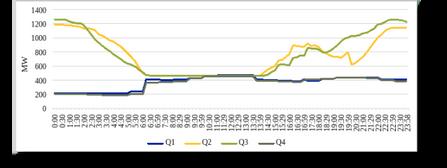
Source: ICRA Research
The tariffs discovered in the RTC tenders by Railways are relatively low with availability requirement of 75%-85% across the contract period On the other hand, the tariffs discovered in the FDRE tenders by SECI remain the highest, given that the winning developers are required to supply based on the load curve provided in the tender document with a demand fulfillment ratio (DFR) of at least 90% on a monthly basis. Moreover, the load curve varies across a 24-hour period as well as varies across the various months of the year, thereby making it challenging for the developers to design the project. The developers
would have to sell excess power in the merchant market during periods of low demand and may have to source power from the merchant market as allowed under the tender conditions during periods of peak demand This exposes the projects to prices in the merchant market and increases the risk profile of the project
Exhibit: Quarter wise 15-minute load curve requirement for the SECI – FDRE VI tender (1260 MW)*

Source: ICRA Research, SECI; *Capacity bid out was reduced to 630 MW subsequently; Supply curve is based on Rfs document issued by SECI with middle month of the quarter chosen for illustrating the supply requirement
While the first FDRE tender by SECI is unlikely to be taken up in view of the relatively high tariff, the second FDRE tender witnessed a decline in tariffs to below Rs 5 0 per unit following a reduction in monthly DFR to 80% Moreover, the recent decline in battery prices may have enabled a reduction in tariffs. Given that the tariffs would remain constant for the entire PPA tenure, this remains highly competitive against the tariff from new thermal power projects, which is expected to remain above Rs 5 5 per unit and escalating with the rise in fuel costs The tariffs discovered in the other FDRE bids during this period largely remain in the range of Rs. 4.4 – 4.7 per unit, with the requirement of 40% CUF on an annual basis and 90% availability of contracted capacity during peak demand hours of the day (4 hours) Herein, the risk profile is relatively lower compared to FDRE projects with load curve requirements
The viability of these projects is closely linked with the PV module and wind-turbine generator (WTG) prices, CUF for the wind & solar component at the selected location, and the cost of storage, which in turn is linked with battery prices for projects using BESS as a storage source For projects intending to use pumped hydro (PSP) as a storage source, they should be in advanced stage of development considering the 24-month timeline provided in these tenders for commissioning the FDRE projects and the long gestation period associated with PSP projects. Overall, the sector is moving towards a greater role for RTC / FDRE tenders to manage the intermittency risk This would increase the risk profile for the developers and their ability to generate commensurate returns remains to be seen


As a leading innovator in the solar inverter industry, SolaX Power continues to push the boundaries of clean energy technology Proudly recognized as one of the Top 4 inverter companies in India (source: BTI Solar Rooftop Map 2023), SolaX Power is dedicated to providing efficient, reliable, and advanced solutions for renewable energy One such product that exemplifies this commitment is the X1-HYB-LV Hybrid Inverter, designed to enhance solar energy generation, optimize performance, and ensure safety for both residential and commercial applications
Key Features & Benefits:
Wide Power Range to Suit Your Needs:
The X1-HYB-LV comes in multiple power ratings 3.0kW, 3.7kW, 4.0kW, 4 6kW, 5 0kW, and 6 0kW offering flexibility for diverse installation requirements Whether for small residential solar setups or larger commercial systems, there’s a suitable inverter size for every need.
Maximized Energy Generation Efficiency:
One of the standout features of this hybrid inverter is its ability to support 200% PV oversizing. This means you can install more solar panels than the inverter’s nominal capacity, maximizing solar energy generation and ensuring you get the most out of your solar system Additionally, with up to 110% AC output, this inverter pushes the boundaries to deliver optimal energy efficiency
Various Operational Modes:
The X1-HYB-LV operates in multiple modes, including on-grid, off-grid, and hybrid configurations This offers you the flexibility to adapt to different power needs and maximize efficiency in various scenarios, ensuring optimal performance whether connected to the grid or functioning independently
Six Load Patterns:
In addition to its versatile operational modes, the X1-HYB-LV supports six distinct load patterns, enabling it to handle different types of energy demands This feature enhances its ability to deliver reliable power, making it suitable for a range of applications, from residential setups to commercial needs
Battery Compatibility:
The X1-HYB-LV is fully compatible with both lead-acid and lithium-ion batteries, giving you the freedom to choose the best option for your energy storage system Whether upgrading an existing setup or installing a new one, this inverter integrates seamlessly with your choice of battery
Seamless Energy Management and Stability:
The X1-HYB-LV is not just about power; it’s about stability and reliability With a peak 200% EPS (Emergency Power Supply) apparent power and a rapid 10-second response time, this inverter is perfect for critical energy needs, ensuring your home or business stays powered during fluctuations or outages Additionally, the inverter’s UPS-level switching time of less than 10ms guarantees seamless transitions between grid power and backup, offering the ultimate peace of mind
Intelligent Solar Panel Optimization:
Thanks to the built-in shadow tracking feature, the X1-HYB-LV maximizes the efficiency of solar panels even when part of the array is shaded This intelligent feature ensures that your system performs at its best regardless of environmental conditions, boosting overall system performance
High-Power Solar Compatibility:
The inverter can handle a maximum DC input current of 16A, accommodating today’s high-power solar panels With low startup voltage, the X1-HYB-LV extends the operational lifespan of your solar system, offering greater economic viability and long-term value.
Enhanced Safety and Durability:
Safety is paramount in any energy system, and the X1-HYB-LV prioritizes this with advanced protective features. It includes battery terminal temperature detection, safeguarding against overheating, and is rated with IP65 protection, ensuring durability even in harsh weather conditions. Moreover, the inverter integrates Surge Protection Devices (SPD) and offers optional Arc Fault Circuit Interruption (AFCI) protection for enhanced safety, giving users peace of mind
Optimized Load Management:
Efficiency is key when it comes to energy consumption The X1-HYBLV implements smart load management, allowing the inverter to allocate energy effectively and efficiently, ensuring optimal usage of available solar power
Versatile On-Grid and Off-Grid Capability:
Whether you’re on the grid or operating off-grid, the X1-HYB-LV supports up to 10 units in parallel, making it versatile for a range of applications This flexibility is ideal for expanding solar systems over time, accommodating increasing energy demands without compromising efficiency or reliability
Powerful Charging and Discharging Abilities:
The X1-HYB-LV is equipped with maximum charging/discharging current of 120A, making it compatible with high-capacity batteries and even generators for additional backup support This powerful charging capacity ensures rapid energy storage and retrieval, giving users continuous access to power, even during high-demand periods

As one of India’s top 4 solar inverter companies, SolaX Power is proud to offer solutions that reflect our commitment to innovation and excellence
The X1-HYB-LV Hybrid Inverter embodies these values, combining cutting-edge technology with intelligent features to deliver one of the most robust and versatile solar inverters on the market
For more details contact us at: sales india@solaxpower com


As the world transitions towards renewable energy and India in particular, the focus is increasingly shifting to solar power and the crucial role of energy storage in optimizing its potential While India benefits from abundant sunlight, solar energy is intermittent, generating electricity only when the sun is shining Effective energy storage solutions are essential to harness solar power around the clock The future of solar energy storage in India is shaped by a dynamic competition among advanced battery technologies, each promising to revolutionize the way solar energy is stored and utilized
Leading this evolution are several innovative battery technologies, each offering unique advantages and addressing different aspects of the energy storage challenge Currently, lithium-ion batteries are the predominant technology, continually evolving to improve energy density, extend battery life, and enhance safety These advancements make lithium-ion batteries a reliable option for current solar storage needs in India, with ongoing improvements likely to sustain their dominance in the market
However, the quest for superior storage solutions has sparked interest in alternative technologies Solid-state batteries, for instance, are emerging as a promising option due to their potential for higher energy densities and greater safety compared to conventional lithium-ion cells By replacing the liquid electrolyte with a solid one, these batteries reduce risks such as leakage and thermal runaway, common issues with traditional batteries Though still in the developmental stage, solid-state batteries could become crucial for future solar storage systems in India
Flow batteries present another promising alternative Unlike traditional batteries, flow batteries store energy in liquid electrolytes housed in external tanks. This design allows for scalable energy storage, making flow batteries particularly attractive for large-scale solar installations, such as those in India's expansive solar parks They offer long cycle life and the ability to decouple power and energy, allowing for scalable solutions that can be adjusted based on energy needs without compromising performance.
Emerging technologies like lithium-sulfur and sodium-ion batteries also hold significant promise for transforming solar storage. Lithium-sulfur batteries offer a higher theoretical energy density compared to lithiumion batteries, potentially providing lighter and more compact storage solutions Sodium-ion batteries, utilizing more abundant and costeffective materials than lithium, could offer a more economical option for large-scale applications in India.
The competition among these technologies is driving rapid advancements and innovations Each technology comes with its own set of trade-offs in terms of cost, efficiency, lifespan, and environmental impact. The race to develop the most effective solar storage solution in India is not just about improving performance but also about making storage more affordable and sustainable
As these technologies mature, their integration into India's solar energy systems will depend on factors such as technological readiness, costeffectiveness, and compatibility with existing infrastructure The overarching goal will be to develop a versatile and reliable storage system that meets the diverse needs of residential, commercial, and industrial solar applications across the country and to achieving this effective policy measures and making essential investments in research and development across different storage technologies will be key Bottom of Form

Senior Director Tetra Tech Anurag

Deye believes in green and sustainable products The increasing demands need backup solutions not only for commercial and industrial applications but also for residential applications The backup solution benefits the grid by sharing load Deye have wide range of products from grid tied inverter to microinverters to hybrid inverters and energy storage solution Deye has come up with versatile and reliable energy storage solution for both residential and commercial applications
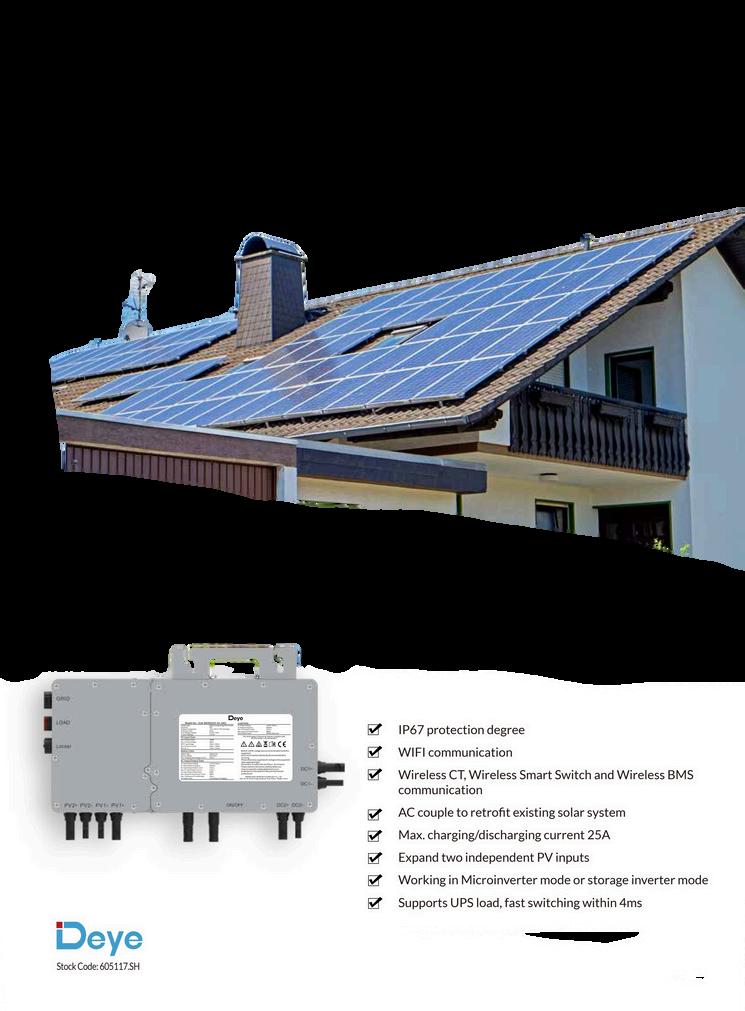
The MS-G215-2H2 and MS-GS215-2H2 containerised solutions is suitable for MW scale plants with lithium based solution supporting on and off-grid operation The solution comprises of 100kW converter with 215kWh lithium batteries with or without PV connection The inbuilt EMS and intelligent BMS provides protection, proactive balancing solutions This solution also supports black start function
For residential application, Deye has launched low voltage all in one integrated solution RW-F5 3-2H3 which comprises of 3 6kW hybrid inverter and 5.3kWh LiFePO4 based lithium batteries suitable for peak shaving, AC coupling, smart load applications Along with this, Deye has also launched balcony energy storage microinverter SUNBK60S/80S/100SG01-EU that ranges from 600W to 1kW The overload capabilities on DC sides support new module technology in all products. Peak power (off-grid) is capable of handling 2times of the rated power for 10s Balcony ESS supports lead acid battery and lithium battery with battery voltage range from 40V-60V



As India gallops towards the third spot in the league of the big boys, the ‘obvious’ intermediate milestone, which is also a foundational requirement for its strides towards $7 Tn mark, is to transform itself into an energy producing and energy guzzling behemoth (efficiently, of course) The Ministry of Power’s ambitious plan to integrate 500 GW of RE to the grid by 2030, is an indicator of the mindset of the current administration towards energy transition as well as energy independence in the wake of recent and highly unpredictable geopolitical equations (Independence - from diminishing as well as carbon intensive fuels However, the real independence shall be when whole upstream solar modules’ production happens at scale in India – from ingots to wafers to cells to modules, ‘solar’ being the torch bearer of the 500 GW goal)
The Q1 FY25 has witnessed a very strong capacity addition of 9 7 GW, while H1 CY24 stands at 15 GW, just 3 GW shy of the whole 18 GW installed last year. If this trend continues, we are on the brink of achieving an annual target of 40-50 GW soon However, this independence comes with significant costs To manage this, the government, industry players both large corporations and startups along with innovators, researchers, and academia must unite to explore more efficient methods for integrating the rapidly growing solar/wind installations into the grid without disrupting its frequency, voltage, or other critical parameters
BESS has been a prominent feature of the energy landscape for some time, with many OEMs investing in its manufacturing through schemes like the Production Linked Incentive (PLI) This investment has spurred optimism, with some battery manufacturers seeing valuations triple in just 18 months Despite this, BESS has struggled to keep pace with the rapid growth of solar installations, largely due to heavy import dependencies. Technically, BESS is highly compatible with the grid as it synchronizes with grid frequency without needing additional compensation devices like reactors, PFCs or STATCOMs The recent surge in subscriptions (7x) for the PLI scheme for ACC manufacturing underscores the sector’s potential, but the required runup is simply not there and BESS alone cannot support the grid to manage the variable nature of the plethora of generation sources being tied to the grid
TESS (Thermal Energy Storage System) is the next test case it seems Select Indian Power Producers recently tied up with foreign OEMs for small sized installations, coupled with their captive Renewable Energy installations Since these are in nascent stage of consideration as a potential storage option for the Indian grid, it would not be fair to cite that the problem with them again is, heavy import dependence The most suited type of TESS for our grid shall be the Latent Heat type, where the solar energy converted by Solar Power Concentrators into thermal energy, changes the phase of a target material to store itself as latent heat, primarily through change in its molecular structure (storing it in bonds, when bonds break – energy gets released ) Latent heat
type TESS have a major advantage of storing larger amounts of energy per degree shift in temperature The installations however as on date are scarce Moreover, these shall find their meaning only in solar irradiation rich zones of the country.
Amid this search for the ultimate storage solution, we should not overlook the power of the Indian Transmission Grid itself the infinite storage medium The ISTS, InSTS, and cross-country links on HVAC and HVDC can transfer excess power from regions of abundance to those in need For example, the NE-Agra multi-terminal HVDC link transfers power from Northeast India to Agra and can also channel power from hydroelectric plants in Bhutan to the northern grid Proposed hydroelectric projects in Arunachal Pradesh could leverage this link to supply power to deficit regions through inter-regional grid transfers
The grid can take it all (store it all) but its acceptability to decentralized power comes with a huge responsibility to actively manage it, in real time The grid needs support, in the form of frequency management, voltage management, power injection scheduling, active asset monitoring & management amongst a host of other parametric controls. This is where FACTS devices like Static Synchronous Compensators (STATCOMs), Reactors, Static VAR Compensators (SVCs), Synchronous Condensers (SynCONs) find their use CEA, of late mandated, deployment of compensation devices at all major RE parks, which subsequently met with operational challenges However, the demand for FACTS equipment is on the rise in the transmission space and it is imperative for any new initiative to see some challenges for a process to smoothen itself out Infact, a step further, Grid Management suites for Transmission Assets Management, Cyber security suites and other IIOT based intelligent devices are gradually fitting themselves in the ecosystem shaping up.
Overall, I am optimistic about India’s energy transition and quest for energy independence The initiative-taking approach of policymakers, OEMs, developers, and consumers buoy this optimism While there are challenges related to supply chains, the drive to grow at 7% annually should smooth out these bumps And further the power sector, which is the ‘infrastructure of infrastructure’ must continue to grow at 2-3% above GDP projections to support India’s broader growth story Our growth story


Solis (Ginlong Technologies), a global leader in solar inverter technology, proudly announces it has received the #1 ranking position in global residential inverter shipments, as reported in the latest Wood Mackenzie inverter market share report Solis also retained its position on the podium as the third-largest inverter manufacturer across all segments for the second consecutive year
Solis' leap to the top of the residential inverter market is a validation of its commitment to innovation, quality, and customer satisfaction This milestone is a direct result of Solis' strategic focus on developing highperformance, reliable inverter solutions that meet the dynamic needs of the residential solar sector
"With partnerships spanning over a decade since our inception in 2005, Solis has earned the trust of customers worldwide," said Jimmy Wang, President of Solis Inverters. "This customer-centric approach and technological leadership are central to our success We are deeply grateful for our customers' continuous support and confidence, which fuels our journey of innovation and excellence " He added, "The recognition from Wood Mackenzie is a testament to our strategy of combining cutting-edge innovation with unparalleled reliability, creating value throughout the solar supply chain "
Solis maintains a steadfast pursuit of excellence through rigorous quality control and product innovation, tailored to market demands Solis further ensures success by offering comprehensive services from pre-sales to post-sales support to customers and solar installers With a significant increase in R&D investment exceeding 5% of annual sales in 2023 Solis is dedicated to enhancing product reliability and advancing innovation beyond customer and market expectations
Actively fulfilling its mission to "Develop technology to power the world with clean energy," Solis is at the forefront with a customer-first approach and a steadfast dedication to sustainable progress
Established in 2005, Solis (Ginlong Technologies) (Stock Code: 300763 SZ) is one of the most experienced and largest manufacturers of PV string inverters Under the Solis brand, the company’s portfolio employs innovative string inverter technology to deliver first-class reliability, validated by the most stringent international certifications With a global supply chain, world-class R&D, and manufacturing capabilities, Solis optimizes its inverters for each regional market, servicing and supporting its customers with a team of local experts
For more information, visit:www.solisinverters.com

The Indian energy storage sector has been witnessed to a glorious 2024 In the first 8 months of the year, the sector saw 18 tenders being issued by various nodal tendering agencies, associated with a total ESS capacity of 34 GWh. The year thus far has also seen commissioning of 178 MWh of BESS capacity while 3 5 GW of FDRE Capacity and 3 GWh of BESS capacity was awarded The year has also been witnessed to the lowest tariff discovery yet for FDRE and Standalone BESS projects at INR 4.98/kwh (load following), INR 4 38/kWh (assured peak) and INR 3 72 Lacs/MW/month respectively The standalone storage price is worth mentioning as it saw a 66% drop in just 2 years timeframe
The global battery oversupply situation has resulted in Lithium-Ion battery cell costs fall by 40% in 2024, with China recording lowest cost for LFP cells at USD 46/kWh in June 2024 The same has also percolated down to system level costs of ESS which has been further helping in bringing Levelized cost of storage for Lithiumion chemistry further down With the global oversupply situation being forecasted to remain soon, it is expected that the cost of Lithium-ion batteries will continue its downward cost trend further aiding in lower costs.
The discovery of lower costs in the recent tenders has met with a lot of encouragement from state DISCOMs too with multiple states sharing standalone storage tenders including Odisha, Uttar Pradesh, Gujarat and Maharashtra to name a few This year particularly has also seen more interest for standalone battery storage tenders. Of the total 18 tenders issued this year, 8 are standalone BESS tenders accounting for a total capacity of 6 3 GWh Along with BESS, the year also saw 3 pumped hydro project tenders totaling to a capacity of 22 5 GWh Overall, as of August 2024, the Indian energy storage market has a total of 48 GWh worth of ESS capacity in open tendering process which includes 9 GWh of BESS capacity, 27 GWh of PSP capacity and 12 GWh capacity being agnostic of ESS technology Of the total 80 GWh worth of ESS Capacity that has been tendered till date, apart from the 48 GWh capacity which is under open tenders, 17 GWh is under various stages of execution, 15 GWh worth capacity has been cancelled and 0 2 GWh (6 projects) has been commissioned

India's energy storage sector is making global waves, with the nation projected to become the 4th largest stationary energy storage market by 2030. The future looks promising for all players involved, as the sector stands at the cusp of exponential growth and development.”

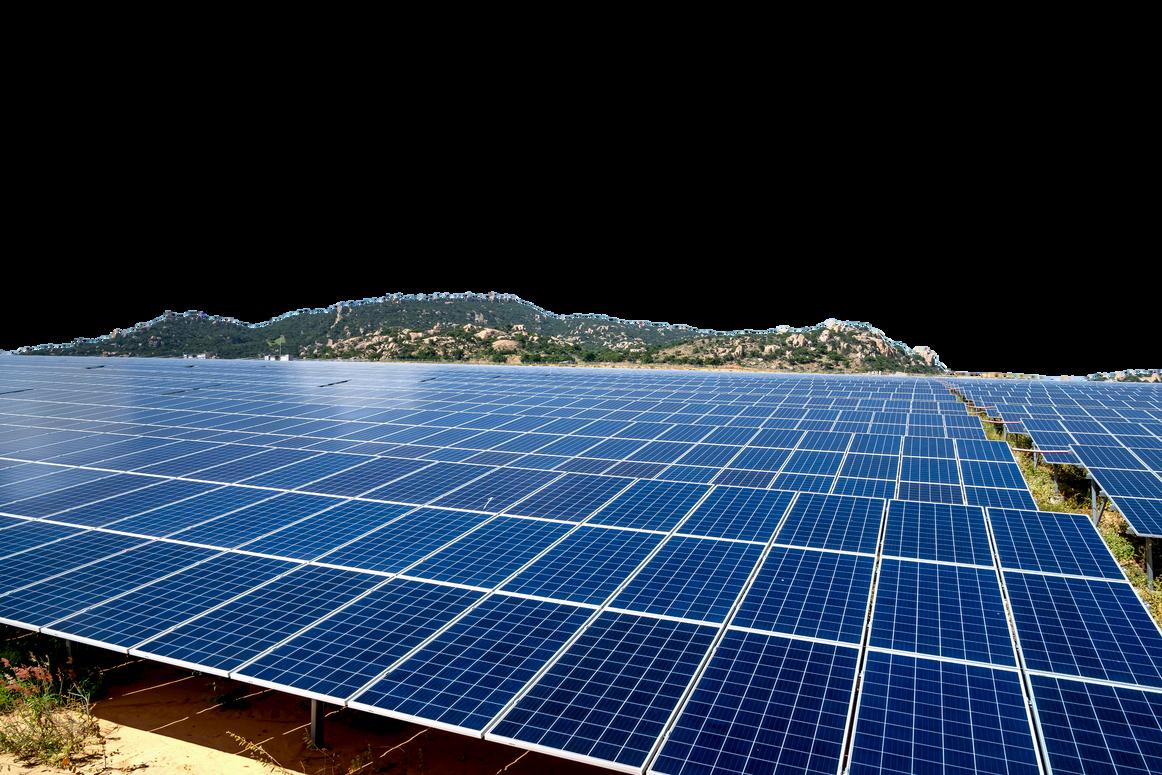
The market has seen multiple new entrants showing interest and each new bid, especially in the stationary storage area, receiving a good response from the industry 2024 also saw the lowest price discovery for Solar with battery project, SECI’s 1 2 GW Solar with 1 2 GWh of BESS project saw the lowest price discovery of INR 3 41/kWh While this is a very encouraging price discovery, it cannot be compared with the other form of tenders requiring round-the-clock renewable energy at high availability metric (FDRE).
The FDRE tenders, which found traction after the guidelines on FDRE were shared by Ministry of New and Renewable Energy (MNRE) last year, have seen a mixed response from industry. Of the total 13.2 GW worth of RE capacity which was tendered by various nodal agencies under the FDRE mode, as of August 2024, 3 6 GW of capacity has been awarded, 1 2 GW capacity is under execution while a total of 4 6 GW of capacity has been cancelled and 3 8 GW of capacity at present in in tendering stage. SECI’s FDRE model which follows the load following mode of FDRE has particularly seen low interest FDRE 2 (1,500 MW) initially agreed to be sold to Punjab DISCOM was cancelled later due to higher tariff discovery (INR 5 6/kWh), while FDRE 3 (800 MW) and FDRE 1 (500 MW) were cancelled due to weak interest This saw bid parameters being relaxed in FDRE 4 (630 MW), where the initial 15-minute wise load profile was changed to hourly load profile and the adherence metric was reduced from 90% to 80%, which has now further been reduced to 75% in FDRE 5 (1000 MW).
The relaxation of parameters saw the tariff discovery in FDRE 4 seeing an 11% reduction at INR 4 98/kWh It is expected that with further reduction of availability metric FDRE 5 may see a lower price discovery as compared to FDRE 4 The other form of FDRE tenders addressing assured peak power availability has seen lower price discoveries as here the adherence to higher availability metric is restricted to just the peak hours (4 hours daily) The lowest tariff discovery in this model has been INR 4 38/kWh, discovered in SJVN’s FDRE-1 (1,500 MW) While the peak assurance model has found better traction in the market, it is the load following model of FDRE which is the closest when compared to achieving 100% RE-RTC While today the price discoveries have been on the higher end, in coming days with further reduction of cost of storage technologies, it is expected FDRE load following model with higher availability metric will find better traction in the market
Overall, the energy storage market has never been more optimistic and motivated While this is encouraging it also puts forward the necessity of better accountability across stakeholders to make this sector grow in a sustainable manner While the tendering activity has seen a significant uptick over the last two years, on average there is a delay of 9-10 months from a tender being issued to that finally reaching bidding. In many cases, after multiple amendments, tenders have been cancelled too Over the last 3 years 10 tenders have been cancelled (13 GWh) after being issued The sector being new and multiple tender varieties being seen in the market, initial cancellations are
The cancellation of tenders after price discovery, especially in a growing sector like energy storage, sends unfavorable signals to the investor community.”

still acceptable, but the more worrying trend is tenders being cancelled after being awarded 6 tenders of a total capacity of 1 GWh have seen cancellation post price discovery, which does not send good signals to the investor community. Thus, rather than following a tender document which worked for a particular project, there is a requirement to treat each tender in a more detailed manner, so that it addresses the use case that the tender is being designed for in the most cost effective and optimal manner There is also a requirement to revise tender guidelines periodically for a sector which has been continuously innovating itself, thus parameters or clauses which seemed appropriate 2 years back may no longer be appropriate today Finally, while lower LCOS discovery is always exciting the same should not come at the cost of reliability, safety or better life management One untoward incident can dampen all the good work which has been done for the sector to grow and take the sector back by years.
The energy storage sector in India, has been making the right noises globally, with India projected to become the 4th largest stationary energy storage market by 2030, the road ahead is very promising for India and all the actors in the energy storage eco-system.


As the world grapples with the twin challenges of energy security and sustainability, solar energy is emerging as a key player in the quest for a cleaner future India, with its ambitious renewable energy targets, is spearheading this transformation The integration of cutting-edge battery technologies and smart inverters is proving crucial in optimizing solar solutions, enhancing both efficiency and energy security.
Energy security is a pressing concern for nations worldwide, and India is no exception The country’s increasing reliance on solar power to meet its growing energy needs highlights the importance of not only expanding solar capacity but also enhancing the efficiency and reliability of solar systems Technological advancements in battery storage and smart inverters play a critical role in addressing these needs
India is making significant strides in solar energy adoption India's installed renewable energy capacity is expected to increase to about 170 GW by March 2025 from the level of 136 57 GW as of December 2023, according to research agency ICRA (source: https://www ibef org/industry/renewable-energy) The government’s ambitious target of 300 GW of solar capacity by 2030 underscores the country’s commitment to renewable energy (source: MNRE, 2024).
One of the primary challenges in the solar industry currently is the limited knowledge consumers have about solar solutions Often, individuals are unsure about their options and rely heavily on retailers for guidance, which can result in a lack of comprehensive understanding and an overreliance on retailer recommendations
To address this challenge, we’ve developed Solculator or the Solar Calculator tool on our website This tool allows users to input details such as the appliances they wish to run, the size of their home (BHK), their typical electricity bill etc Based on this information, the calculator provides a customized solar solution By equipping users with initial insights, they are better prepared for informed discussions with dealers, transforming the interaction into a more engaging dialogue rather than solely depending on external advice
In addition, we offer two specialized apps to enhance the user experience:
Liv Monitor: Designed for consumers, this app provides real-time access to system performance metrics, including energy usage and solar generation. Users can monitor their system’s efficiency, track solar energy production, and easily raise service requests, ensuring they stay informed and in control
Livsol: Tailored for our partners, this app includes a comprehensive dashboard that tracks installation details, service requirements, and maintenance schedules for Livguard solutions By automating these processes, Livsol reduces the need for manual intervention and increases operational efficiency
These tools are part of our commitment to bridging the knowledge gap and supporting both consumers and partners in making wellinformed decisions and managing their solar systems effectively.
Solar growth with initiatives like the PM Surya ghar muft bijli yojna and PM Surya ghar muft bijli yojnamore present an opportunity to enhance solar solutions further by integrating cutting-edge battery technologies and smart inverters.
Battery technology is crucial for optimizing solar energy storage and making it available on demand Lithium-ion batteries, known for their high energy density and long cycle life, are becoming the standard for solar energy storage
In India, the battery storage market is set for impressive growth. According to a report by Mordor Intelligence, the Indian battery storage market is expected to reach USD 5 27 billion by 2029, growing at a CAGR of over 11 20% (source: Mordor Intelligence, 2024) This growth reflects a broader trend towards more efficient and durable battery solutions that can handle the intermittent nature of solar power
Modern batteries now feature improved safety mechanisms and smarter management systems These systems monitor battery health, optimize charging cycles, and ensure longer life spans, which are crucial for the high demands of solar energy storage
Battery technology is crucial for optimizing solar energy storage and making it available on demand
Smart inverters play a pivotal role in enhancing the performance of solar power systems Unlike traditional inverters, smart inverters are equipped with advanced features that improve energy conversion efficiency and grid stability. They can dynamically adjust the power output based on real-time data, ensuring that solar energy is used most effectively
The residential solar PV inverter market was valued at USD 6 4 billion in 2023 and is anticipated to grow at a CAGR of 30.3% from 2024 to 2032
In India, the integration of smart inverters into solar systems can lead to significant improvements in performance These inverters enhance the efficiency of energy conversion, manage energy distribution more effectively, and support grid stability They also enable better monitoring and diagnostics, allowing for quicke responses to any issues that may arise
Modern inverters are increasingly equipped with smart features and digital capabilities, turning them into sophisticated grid assets Smart inverters facilitate real-time monitoring of system performance, powercut prediction, charging indicators, running loads, etc These features not only optimize system performance bu also enhance grid stability and resilience.
Digitalization has further advanced the field by enabling predictive maintenance, fault detection, and advanced analytics This proactive approach helps in managing solar PV systems efficiently, minimizing downtime, and reducing maintenance costs
The growth of solar energy is also heavily reliant on advancements in battery technology Lithium-ion batteries have emerged as the preferred choice due to their high energy density, fast charging capabilities, and decreasing costs The Indian battery storage market is set to reach USD 5 27 billion by 2029, with a CAGR of over 11 20% (source: Mordor Intelligence, 2024) These developments ensure more efficient storage and utilization of solar energy, providing a reliable power supply even when sunlight is not available
Intelligent energy management systems are revolutionizing how energy flows are controlled and optimized These systems use advanced algorithms and real-time data to manage energy production, consumption, and storage By integrating these systems with solar installations, businesses and homeowners can achieve seamless coordination between energy generation, storage, and distribution This not only maximizes the use of solar energy but also minimizes waste and enhances load management.
Pairing smart inverters with advanced battery storage systems is a significant trend in the solar industry As battery costs decline, integrating storage with solar systems allows excess solar energy to be stored and used during non-solar hours. For residential systems, this means increased self-consumption and cost savings, while for utilities, distributed storage helps manage grid demand and stabilizes fluctuations in solar output.
The integration of advanced battery technology and smart inverters is crucial for enhancing solar solutions and ensuring energy security The integration of advancements in battery technology and smart inverters represents a significant leap forward for solar solutions As India accelerates its transition to renewable energy, leveraging these innovations will be crucial for achieving greater efficiency and sustainability in solar power systems

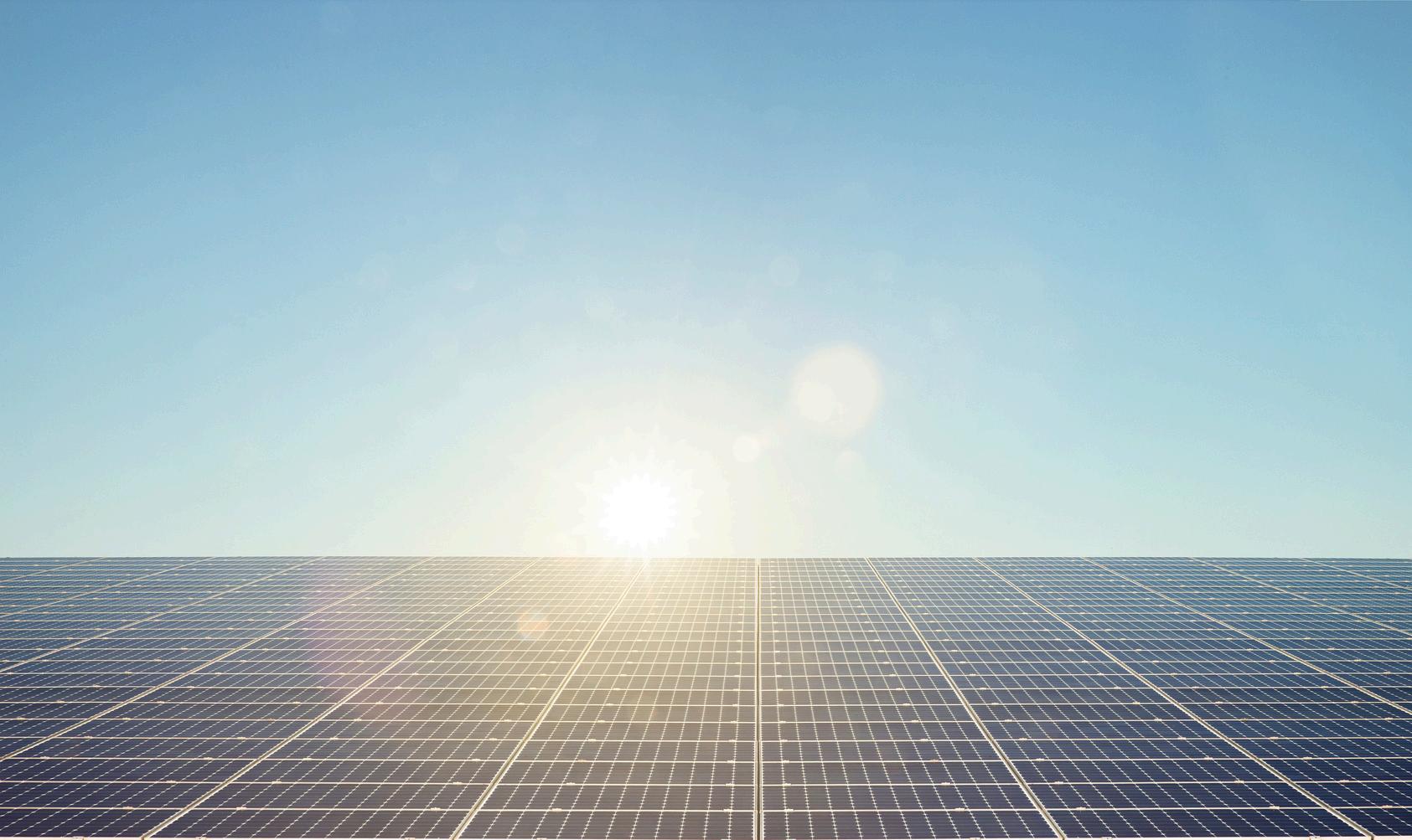
While we prioritize developing solar energy capacity, insufficient attention is given to managing solar panels once they reach the end of their life cycle. The International Renewable Energy Agency (IRENA) recently projected that the waste from global cumulative solar PV projects will increase from 200,000 tonnes in 2021 to 200 million tonnes by 2050
India is expected to decommission up to 600 kilotonnes (KTs) of solar PV panels by 2030 This projection includes waste generated from both existing and newly installed solar capacities between the fiscal years 2024 and 2030 The significant increase in solar waste is primarily due to the rapid expansion of India's solar energy infrastructure, which is aimed at meeting the country's renewable energy goals.
The solar recycling industry is still in its early stages As the number of solar installations continues to grow, the risk of supply chain bottlenecks increases Circular economy in Solar Photovoltaics will ensure long-term security, reliability and resilience of industrial supply chains. Manufacturers, system owners, and third-party recyclers can generate additional income by selling reclaimed materials in commodity markets This can decrease India's reliance on foreign imports and strengthen domestic manufacturing
Circular economy principles aim to shift from a linear economic system of "take-make-consume-dispose" to a circular model This model focuses on extending the lifespan of products, maintaining high performance, and enabling the reuse and recovery of materials However, the only barrier to this initiative is the upfront cost. At present, the cost of recycling PV materials is significantly higher than the cost of disposing of them in landfills
Government policies and regulations are pivotal in guaranteeing a safe environment for waste management and recycling services by facilitating the secure handling, storage, treatment, transportation, repair, reuse, recycling, and disposal of PV equipment In India, the management of waste derived from solar PV modules, panels, and cells is regulated under the Electronic Waste Management Rules of 2022 notified by the Ministry of Environment, Forest and Climate Change These regulations shall ensure proper collection, handling, and disposal of end-of-life panels.
PV solar panel recycling can be encouraged through two primary mechanisms: Cost reduction strategies within the recycling process, and, Provision of financial incentives Cost reduction can be achieved by reusing the recycled materials for other purposes. For example- In Australia, researchers are developing a cost-effective and eco-friendly process to extract silicon from solar panels and convert it into Nano-silicon for lithiumion batteries This Nano-silicon will be used to create high-energy anodes, reducing battery material costs Designing of solar panels using fewer different types of materials, avoiding toxic substances, and designing for disassembly can make recycling more cost-effective Incentives by Government in form of subsidies, grants, and awards can mitigate financial risks and incentivize early investments, attracting more participation of private industries Direct funding from Central or State authorities for research and development could stimulate innovation in designing more resilient and standardized PV products
India must establish an environment conducive to sustainable solar PV recycling, which requires adequate financing The complete financial ecosystem needs to come together and support such initiatives i.e. government, banks/institutions and private investing ecosystem
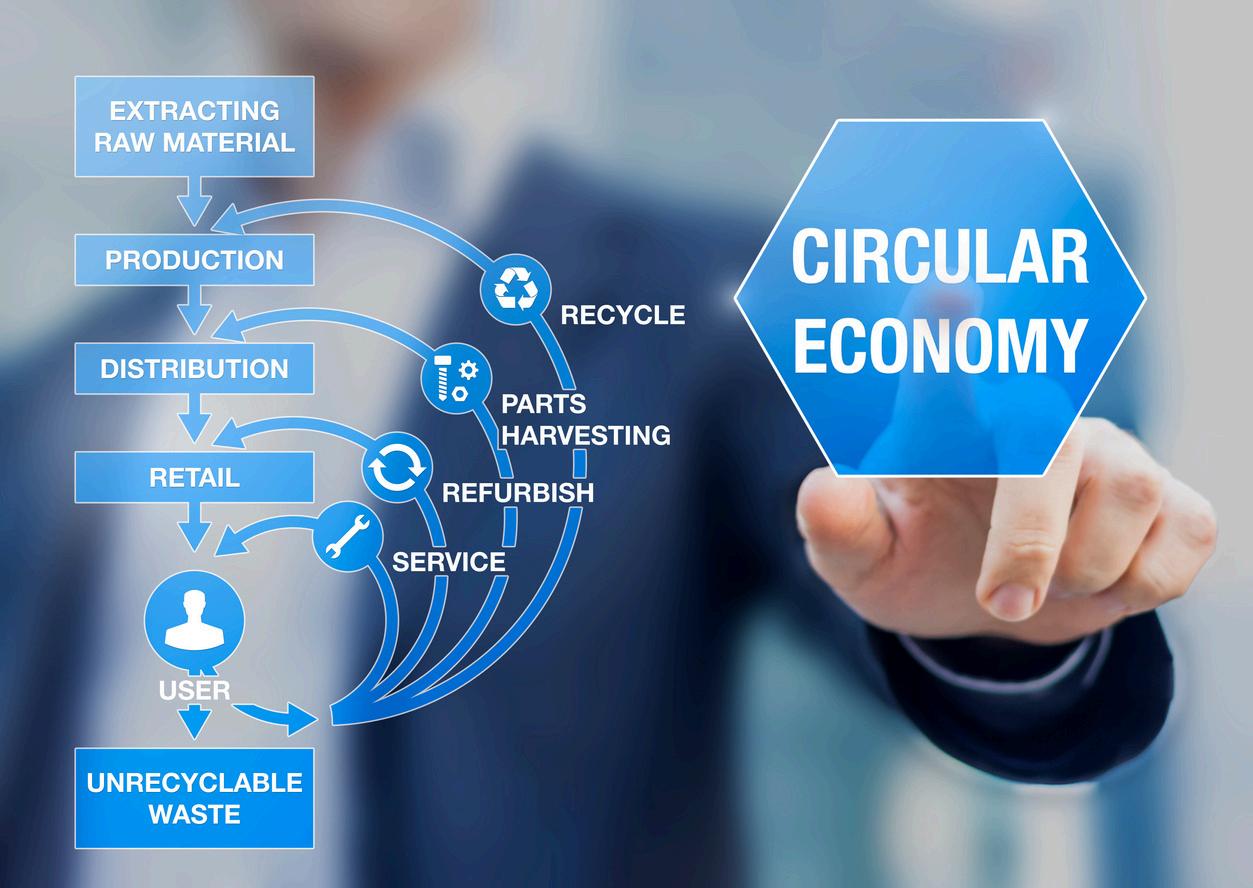
Investing in the recycling of solar panels today is a crucial step towards building a resilient and self-sufficient economy. By treating waste as a valuable resource, we can reduce our reliance on imported raw materials and stimulate the growth of domestic industries.”


A D companies to cover initial setup costs Innovation Grants for funding of R&D projects aimed at developing more efficient, cost-effective, and environmentally friendly recycling technologies. Tax Credits likeInvestment Tax Credits (ITC) for reducing the investing company’s overall tax liability, and, Production Tax Credits (PTC) for the firms to earn tax credits based on the amount of recycled material processed Depreciation Benefits for the Recycling equipment and facilities so that they can be depreciated faster, enabling quicker recovery of investment costs and reducing taxable income in the early years Tax Exemptions for recycling equipment and machinery can lower the upfront costs for companies
Provide support in form of access to Grants and Low-interest Loans. Global Environment Facility grants to support initiatives that aim to reduce e-waste and promote the sustainable management of hazardous materials Green Climate Fund to develop infrastructure and processes that minimize the environmental impact of solar panel disposal United Nations Development Programme (UNDP) grants can be utilized for capacity building, technology transfer, and creating awareness about the importance of recycling PV solar panels Indian PV recycling projects can benefit from European Union (EU) funding aimed at enhancing renewable energy infrastructure and reducing e-waste World Bank, Asian Development Bank (ADB) ADB & International Finance Corporation (IFC) offers low-interest loans and technical assistance It can provide the needed capital to establish recycling facilities and support innovative recycling technologies These financing can be accessed to develop a robust recycling infrastructure and implement best practices in waste management. The loans and equity financing to private sector can be taken from IFC India can leverage IFC’s financial products to attract private investments and scale operations Established by the BRICS nations, New Development Bank (NDB) offers loans to projects that promote sustainable development Indian projects focused on PV solar recycling can benefit from NDB’s competitive loan terms to expand their capacity and enhance their recycling processes
Venture Capital (VC) Firm investments are high-risk but high-reward, suitable for start-ups with ground-breaking ideas in PV solar recycling Beyond financial backing, VCs offer strategic guidance, industry connections, and mentorship Private Equity (PE) Firms investments typically involve larger sums of money compared to VCs, aimed at accelerating growth and scaling businesses which can be used to expand recycling facilities, enhance processing capabilities, and enter new markets PE firms bring extensive operational experience and industry knowledge, helping recycling companies optimize their processes, reduce costs, and increase profitability Equity Financing i e raising capital by selling shares is a common method for start-ups and established companies to secure funding For mature recycling companies, an IPO can be a viable option to raise significant capital from public markets Also, Private Placements can be opted for selling shares to a select group of investors, including VCs, PE firms, and institutional investors


The solar energy sector is experiencing remarkable growth, fueled by decreasing costs and a heightened awareness of climate change However, the intermittent nature of solar power, dependent on sunlight availability, poses a significant challenge Energy storage technologies offer a solution by capturing and storing excess solar energy generated during peak periods for use during nighttime or cloudy conditions This not only enhances the reliability of solar power but also contributes to reducing our dependence on fossil fuels. The rapid growth of renewable energy, especially solar, in India presents a massive opportunity for the development of energy storage solutions The Indian government's ambitious renewable energy targets, coupled with supportive policies, are driving the demand for efficient and cost-effective energy storage technologies The Central Electricity Authority of India forecasts that the country's energy storage demand will reach a staggering 73 93 GW/411 4 GWh by 2031-32, highlighting the immense potential for growth in this sector.[1]
Currently, lithium-ion batteries dominate the solar storage landscape due to their affordability, longevity, and efficiency However, the pursuit of superior performance and cost-effectiveness has spurred the development of alternative battery technologies. The Indian government is actively promoting the development of advanced energy storage technologies through various initiatives, such as the Production Linked Inventive (PLI) scheme, which aims to boost domestic manufacturing capacity for advanced chemical batteries
longer-lasting and lighter batteries This could be a game-changer for electric vehicles, enabling them to travel longer distances on a single charge However, challenges related to cycle life and stability need to be addressed before they can become commercially viable Researchers are actively working on improving the cycle life and stability of lithium-sulfur batteries by developing new materials and electrolytes
Lithium-Sulfur Batteries: These batteries hold the potential to be significantly more cost-effective and possess a higher energy density compared to lithium-ion batteries The ability to store more energy within a compact space makes them particularly attractive for applications like electric vehicles and scenarios where space constraints are a concern. The theoretical energy density of lithium-sulfur batteries is significantly higher than that of lithiumion batteries, which translates to potentially longer-lasting and lighter batteries This could be a game-changer for electric vehicles, enabling them to travel longer distances on a single charge. However, challenges related to cycle life and stability need to be addressed before they can become commercially
viable Researchers are actively working on improving the cycle life and stability of lithium-sulfur batteries by developing new materials and electrolytes.
Solid-State Batteries: Distinguished by their use of a solid electrolyte instead of a liquid one, solid-state batteries offer enhanced safety and stability The absence of flammable liquid electrolytes significantly reduces the risk of fire and thermal runaway, making them a safer option Additionally, they hold the promise of surpassing lithium-ion batteries in terms of lifespan and energy density Solid-state batteries also have the potential for faster charging times, which could make electric vehicles more convenient to use. However, the technology is still in its early stages of development, and challenges related to cost and scalability need to be overcome Several companies and research institutions are investing heavily in solid-state battery technology, and we can expect to see significant progress in the coming years
The landscape of energy storage extends beyond batteries, encompassing innovative solutions that cater to long-duration storage and grid stabilization needs
Pumped Hydro Storage: This well-established technology utilizes two reservoirs situated at varying elevations to store energy Excess electricity is used to pump water from the lower to the upper reservoir When electricity demand arises, water is released from the upper reservoir, driving turbines to generate electricity Pumped hydro storage is a mature and proven technology with high energy efficiency and long lifespans It is particularly suitable for large-scale energy storage applications and can provide grid stability services India has significant potential for pumped hydro storage due to its diverse topography The Central Electricity Authority has identified over 96 GW of potential pumped hydro storage capacity across the country
Hydrogen Storage: This approach involves using electricity to split water into hydrogen and oxygen through a process called electrolysis The generated hydrogen can be stored and subsequently utilized in fuel cells to produce electricity when required, offering a clean and versatile energy storage solution Hydrogen storage has the potential to enable long-duration energy storage and decarbonize various sectors, including transportation and industry The Indian government has launched the National Green Hydrogen Mission, which aims to establish 5 million tons per year of green hydrogen production capacity by 2030 This initiative is expected to drive investments in hydrogen storage technologies However, further advancements in electrolysis and fuel cell technologies are needed to improve efficiency and reduce costs.
The future of solar storage is brimming with potential Advancements in battery technologies and the exploration of alternative storage solutions pave the way for storing larger amounts of solar energy for extended durations. This progress will not only enhance the reliability and affordability of solar power but also facilitate a smoother transition towards a clean energy future In India, the government's push for renewable energy and the increasing adoption of solar power are creating a favorable environment for the growth of the energy storage market The "National Framework for Promoting Energy Storage Systems" and other policy initiatives, such as the Viability Gap Funding scheme, are expected to further accelerate the deployment of energy storage solutions in the country.
The National Framework for Promoting Energy Storage Systems [2] promotes the adoption of Energy Storage Systems (ESS) to address the challenges associated with the increasing integration of renewable energy sources into the power grid. The framework aims to achieve a 24x7 dispatchable renewable power supply, reduce greenhouse gas emissions, and improve grid stability The government has estimated a significant need for ESS capacity in the coming years and has outlined various applications and use cases of ESS in the power sector. The framework also details existing policy measures and proposes future steps to create an enabling ecosystem for ESS, including financial incentives, grid integration measures, and the promotion of indigenous manufacturing and recycling
Diverse perspectives exist regarding the future trajectory of solar storage While some experts anticipate the continued dominance of lithium-ion batteries, others foresee the emergence of new technologies like lithium-sulfur and solid-state batteries as potential successors The choice of technology will depend on various factors, including cost, performance, safety, and environmental impact It is likely that a combination of different energy storage technologies will be used to meet the diverse needs of the grid
Irrespective of the specific technology that ultimately prevails, the pivotal role of energy storage in the future of solar power remains undeniable Energy storage empowers us to harness solar power as a dependable and economically viable energy source, contributing significantly to the reduction of our reliance on fossil fuels
The future of solar storage is rich with opportunities. Through the development of innovative battery technologies and diverse energy storage solutions, we can establish a more sustainable and resilient energy system This endeavor not only benefits the environment but also unlocks new economic prospects We stand at the threshold of a clean energy revolution, and energy storage will undoubtedly play a central role in shaping this transformative journey The integration of solar energy with advanced battery storage solutions is crucial for achieving a clean and sustainable energy future As research and development efforts continue, we can expect to see even more innovative and efficient energy storage technologies emerge, further accelerating the transition to a renewable energy-powered world India, with its abundant solar resources and supportive policy framework, is well-positioned to become a global leader in the solar storage industry




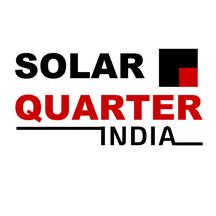
Since 2010, India has prioritized solar energy as a key renewable source It has led global efforts to harness solar power, positioning it at the core of its energy strategy. Further, the 14th National Electricity Plan (NEP14), introduced in May 2023, aims to double electricity generation by 2032, with solar playing a central role
INDIA'S COAL-TO-CLEAN ENERGY TRANSITION LED BY SOLAR
According to the generation planning studies conducted by Central Electricity Authority (CEA), the required coal based installed capacity will be at 283,000 MW by FY 2032 compared to the present installed capacity of 214,000 MW Additional 80,000 MW of coal & lignite-based capacity is planned till 2032. NEP14 has set an ambitious target with aim to reduce coal dependence The plan anticipates a surge in solar power's share from 5% to 25% between 2022 and 2032, marking a pivotal period of expansion India plans to increase its total installed capacity more than twice from 399 GW in 2022 to approximately 849 GW by 2032. Solar power is projected to grow from 81.81 GW in 2024 to 365 GW by 2032, constituting more than half of the total growth in installed capacity India’s solar capacity is expected to increase at a CAGR of 22 7% through 2023–27 to achieve its initial target of installed capacity of 185 6 GW until 2027, which is further expected to increase to 365 GW by 2032. India has already built 15GW of solar capacity in the first half of 2024, mssive 282% increase over same period last year
POLICY EFFORTS TO BOOST CAPACITY
India had 89.4 GW of installed PV capacity by August 2024, requiring an addition of over 100 GW in the next three years to meet its ambitious target It becomes imperative that one takes note of overarching policy framework that has evolved over the years Policies and schemes like Solar Parks and Ultra Mega Solar Power Projects (2014), CPSU Scheme Phase-II (2019), PM-KUSUM Yojana (2019), PM-Surya Ghar Muft Bijli Yojana (2024) are attributed for keeping solar sector growth ahead of all other RE sources Moving forward, India will have to identify land-neutral technologies and applications to ensure that precious land resources are not diverted from agriculture farms to solar farms
MANUFACTURING CAPACITY EXPANSION
The manufacturing capacity incentive policies like Approved List of Models and Manufacturers (ALMM), Basic Customs Duty (BCD), Production Linked Incentive Scheme (PLI) also contributed to swift growth in cell and module production capacity Today, India boasts of 70GW of module manufacturing and 7GW of cell manufacturing capacity. While module manufacturing capacity is expected to grow to 100GW, cell manufacturing capacity is expected to hit 50GW mark by 2030 However, there is potential for combining technologies like agrivoltaics with HJT modules for efficient dual-use solar farms and integrating BIPV with smart grids and storage systems for sustainable development.
INTEGRATED TRANSMISSION INFRASTRUCTURE
Over last two decades, India has successfully connected all regions in the country to create one national grid which has significantly increased capacity to absorb renewable energy Further, the Cabinet Committee on Economic Affairs approved the 13GW Green Energy Corridor (GEC) Phase II - ISTS project in Ladakh in October 2023 Several states, notably Gujarat, Karnataka, and Tamil Nadu, are also implementing Phase-II to integrate roughly 20GW of renewable power by 2026. As a result, the country is getting ready to absorb massive quantity of solar energy that would be built over next decade
MARKET PLAYING CRUCIAL IN PRICE REDUCTION
While the Government Of India has been proactive in bringing in various policies to boost both generation and manufacturing capacity, market has responded aggressively to these policy majors India has seen one of the steepest price drops in solar sector In 2010, the cost of solar power generation was about ₹15-₹20 per kWh ($0.30-$0.40 per kWh) which by 2024 has reduced to ₹2 0-₹2 5 per kWh ($0 025-$0 030 per kWh), depending on the location and project specifics This massive reduction has made solar the first choice for power generation ahead of conventional sources such as coal Further, reduction in battery prices is expected to result in mainstreaming of storage thereby creating dispatchable power to compete with conventional sources
CONCLUSION:
India would not have been able to achieve success in solar capacity addition without both the policy and market forces playing their respective roles They will have to complement each other if India has to achieve the target of fifty percent non-fossil capacity by 2030.




We are in the era of energy transition and decarbonisation Globally, there has been a shift underway from fossil fuels to cleaner energy sources. Solar energy is the key contributor to the energy transition efforts due to its availability, affordability, and scalability The renewable energy generation including solar energy suffers from a problem of intermittency The variability in generation warrants attention as the contribution of renewables in the energy mix increases The integration of solar energy in the grid also results in the skewness in the power supply as more power is produced during the day while the peak power demand comes in the evening The issue of intermittency and grid stability can be addressed by the energy storage systems which can store the energy generated during the peak solar hours for supply during the evening time when the power demand is at its peak.
There are multiple types of energy storages such as mechanical (pumped hydro projects or PSP), chemical (fuel cells), electrochemical (battery), etc Battery Energy Storage Systems (BESS) are emerging as one of the preferred options of energy storage. Previously the cost of the BESS was substantially high which discouraged its application in the large-scale energy projects However, as the technology progressed, the BESS systems have witnessed a reduction in prices The current prices of the BESS technology are still high, but the commercial viability of the battery energy storage have started to emerge. This is especially evident from the past successful tendering of peak power, FDRE and standalone BESS systems by SECI As per National Electricity Plan (NEP) 2023 of Central Electricity Authority (CEA), the energy storage capacity requirement is expected to be 82 37 GWh (47 65 GWh from pump storage and 34.72 GWh from BESS) in year 2026-27. This requirement is further expected to increase to 411 4 GWh (175 18 GWh from PSP and 236 22 GWh from BESS) in year 2031-32 Therefore, the incremental capacity in the energy storage systems is expected to come from BESS technology
BESS or the battery energy storage system consists of a battery system, inverter, battery management system and safety equipment The battery industry has been experiencing the technological shift from traditional lead acid batteries to the more efficient Lithium-Ion batteries When it comes to the energy storage, lead acid batteries are one of the oldest and a relatively cheaper source for energy storage Lead acid batteries are generally used in the off-grid energy storage systems such as solar installations in the residential sector due to their affordability and suitability for small scale applications However, their lifespan, efficiency and energy density are lower than that of the Lithium-Ion batteries. Lithium-ion batteries are one of the most well-known battery types due to their extensive usage in the electric vehicles (EVs) and consumer electronics. Lithium-Ion batteries offer a high energy density, long cycle life and efficiency Li-ion batteries consist of a cathode (lithium meta oxide), an anode (generally graphite) and an electrolyte (lithium-based salt) Based on the cathode material, Li-Ion batteries are further categorised into: (i) Lithium Iron Phosphate (LFP) and (ii) Lithium Nicke Manganese Cobalt batteries (NMC). LFP batteries have a lower energy density and efficiency but higher life span than the NMC batteries LFP batteries are preferred for large scale energy storage due to their long cycle life and durability Lithium-ion batteries are one of the preferred choices for large energy storage applications due to their high energy density, reliability, and long cycle life.


evolving battery industry. However, there are multiple battery technologies which are under development including Sodium Sulphur, Sodium Ion, Vanadium based flow batteries, etc Each of these BESS technologies has varying applications in the energy storage depending upon the energy density, availability, cost, charging and discharging cycles, operating temperatures, etc.
There are differing opinions about which battery technology will emerge as the winner in the energy storage landscape However, a technologically advanced and affordable BESS system complemented with the solar energy will go a long way to realise the full potential of solar energy in India


















Best Utility Solar Project of the Year
Best Floating Solar Project of the Year
Hayleys Solar
Best Rooftop Solar Project of the Year
Best Rural Electrification Project of the Year
Hayleys Solar


Best Solar OffGrid Project of the Year
Best Solar Project Engineering of the Year
Hayleys Solar
Best Solar Mini-Grid Project of the Year
Alta Vision Pvt Ltd

Best Solar Engineering Team of the Year - Diamond
S.L.A.M. Power Solutions (Pvt) Ltd




Best Wind Engineering Team of the Year
Ryse Energy



Smart Innovative Project of the Year
Solar Island (Pvt) Ltd.


Best Solar Engineering Team of the Year - Platinum
Best Marketing Team of the Year
Hayleys Solar
Best Legal Team of the Year
Tiruchelvam Associates
Best Marketing Team of the Year
Best Sales Team of the Year
Hayleys Solar
Best Construction Team of the Year
Best Procurement Team of the Year
Hayleys Solar


Best Finance Team of the Year
Hayleys Solar Best O&M Team of the Year
Top In-House Counsel Team
Best Design Team of the Year
Best Consulting Team of the Year
Hayleys Solar

SOLARQUARTER
STATE LEADERSHIP MEET
MADHYAPRADESH





Leadership guides Madhya Pradesh toward a brighter tomorrow By honoring visionary leaders, we celebrate the progress of our great state.

State Market Leader Award - Inverter
10-Year Milestone of Inverter Excellence in India Award



State Technology Innovation of the Year : Pioneers in Energy Independence
FuelON
Sungrow India Pvt. Ltd.
State Market Leader Award - Modules
Saatvik Green Energy Pvt. Ltd.

State Market Leader AwardMounting Structures
Pack & Dec Industries




State Award For Excellence in Integrated Energy Solutions
iNVERGY

TRADE PLUS RESOURCES AND SOLUTIONS PVT. LTD.
TRADE PLUS RESOURCES AND SOLUTIONS PVT. LTD.

State Market Leader Award (In DCR)- Modules
Mundra Solar Energy Limited
Smart Technology Innovation of the Year - Inverter
SOLIS

State Technology Leadership Award - Solar Monitoring & Analytics
TrackSo
Next-Generation Solar Module Manufacturer

State Distributor of the Year - Diamond
Advance Power

Best Project of the YearIndustrial
Solar EPC Company of the Year - Industrial
Mahindra Solarize Pvt. Ltd.



Solar EPC Company of the Year - Commercial
Solar System Integrator of the Year (Residential) - Diamond
Gargee Energies





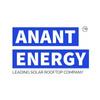


Solar EPC Company of the Year - Ground Mount




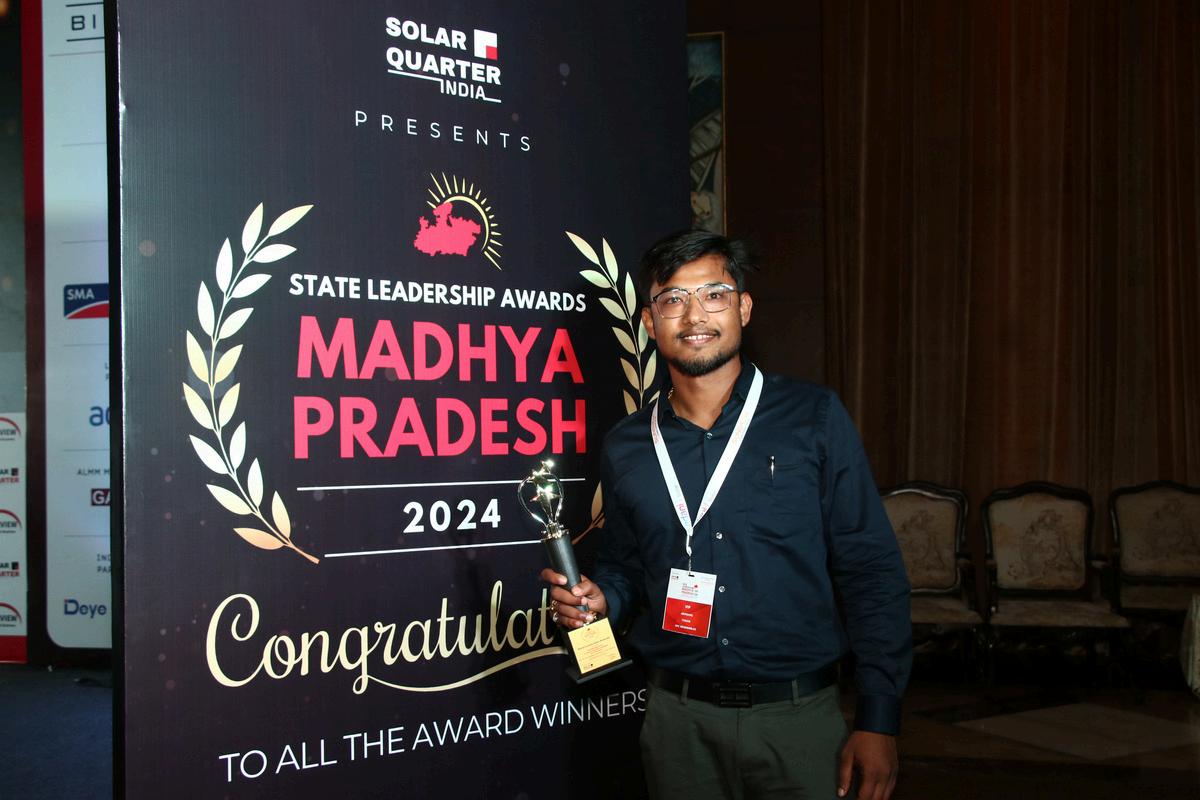
A e Year siness Head of s Power Technologies AGRAWAL eur of the Year CEO evelopers









Company of the Year: Innovative ESG Initiative
Project of the Year: Energy Efficiency
Welspun Corp Limited


C he Year: Excellence in Corporate


SOURCE:MNRE
In the pie chart, Renewable capacity additions continue to increase at a rapid pace in India, accounting for approximately 33 5% of total India’s power capacity at the end of July 2024 India’s total installed power capacity stood at over 448 381 GW at the end of July 2024 from all the sources, with renewables accounting for 150 276 GW making up 33 5%, compared to cumulative renewable energy installations of 130 886 GW at the end of July 2023, which represented a growth of around 14 8% yearover-year Solar power accounted for approximately 87 207 GW of installations, which represents 19 4% of the total installed power capacity Among the renewable, Wind and Solar constitute around 89 4% of the total renewable(excluding large hydro), Wind Power installed capacity at the end of July 2024 was around 47 075 GW, which represents 10 5% of the total power capacity installed
SOURCE:CEA,SOLARQUARTERRESEARCH
India installed a remarkable milestone by installing an unprecedented 13 889 GW of Solar PV capacity between January and July 2024 By the end of July 2024, the country's total Solar PV installations surpassed 87 207 GW During this period, rooftop Solar PV installations reached approximately 13 4 MW Rajasthan led the way, with 22 86 GW installed, accounting for 26 21% of the nation’s total Solar PV capacity The state also added around 4,083 59 MW in the first seven months of 2024 Rajasthan, Gujarat, Tamil Nadu, and Karnataka together contributed over 63 16% of the total installed Solar PV capacities across the country While Rajasthan and Gujarat maintained their leading positions, Tamil Nadu moved up one spot, pushing Karnataka down to fourth place compared to installed solar PV capacity by December 2023 The overall Solar PV installations saw a growth of over 22 6% compared to the 71 145 GW recorded by the end of July 2023
SOURCE:CEA
Total renewable energy generations in June 2024 reached 23,052 28 million units, there is an increased of RE generations by around 1 99% year-over-year from June 2023, where the RE generations were 22,602 58 million units Solar Power generation has also increased by around 19 13% year-over-year from June 2024 (11,445 66 million units) over June 2023 (9,607 58 million units), Wind Power generation has decreased by almost 12 31% in the same period and reached 10,134 92 million units in June 2024

















SOURCE:CEA
SOURCE:CEA
Solar Energy Corporation of India (SECI) paid ₹126 44 billion ( $1 525 billion) to Solar and Wind developers for power purchased in the calendar of 2023 from January to December The disbursed amount was highest in October in the calendar year 2023 The SECI payment to Solar and Wind had declined after October 2023, till February 2024 There have been many ups and downs in the payment to generators since the start of 2023 as shown in the above chart. In the Calendar year 2023, there is a growth in the monthly payment to wind and solar power generators. While SECI paid ₹19.24 billion for the purchase of Solar and wind in the first two months of the calendar year 2024 The payments made to power generators such as wind and solar were quite high in the first half of the FY 2023-24 compared to the second half, and are at lower side since November 2023
